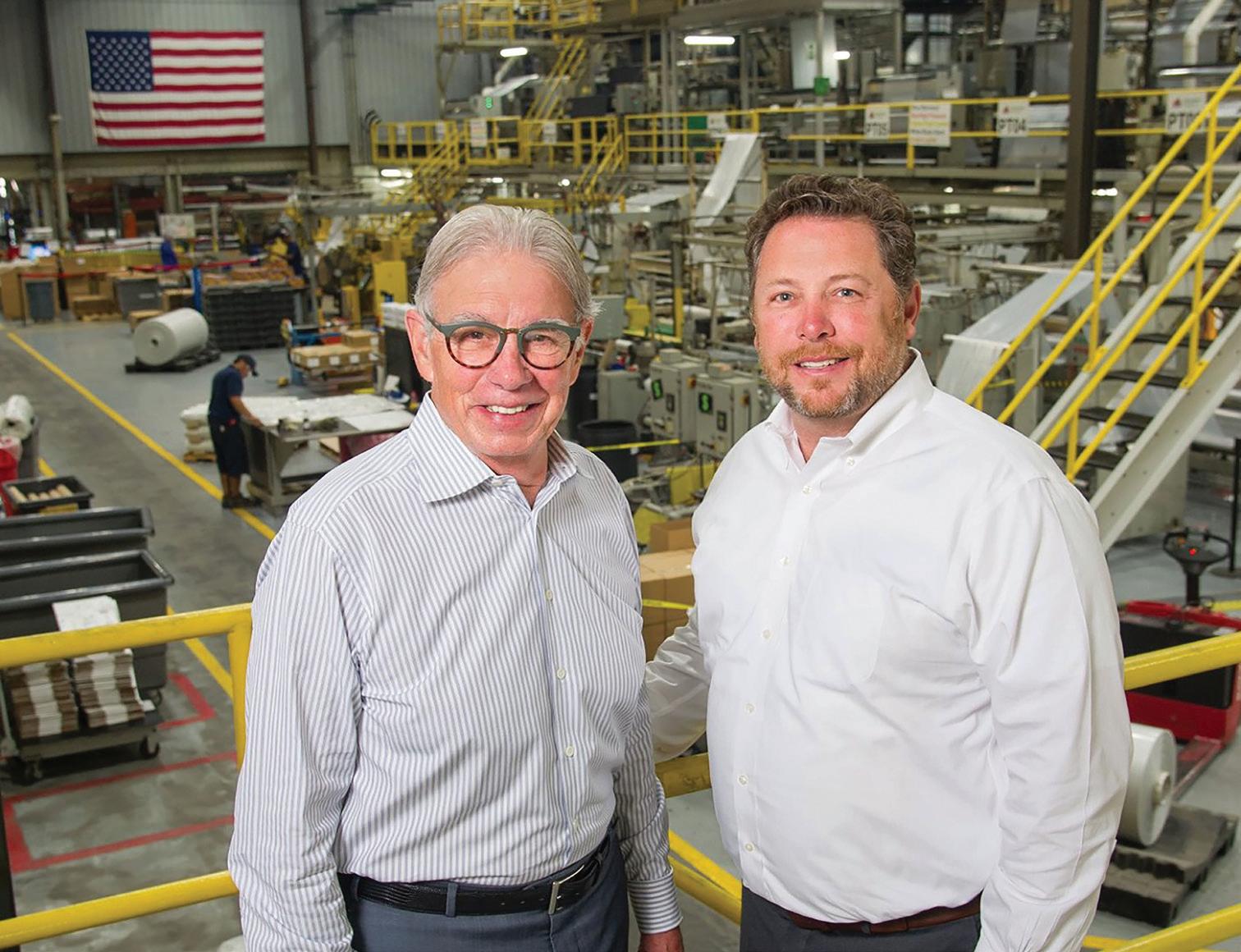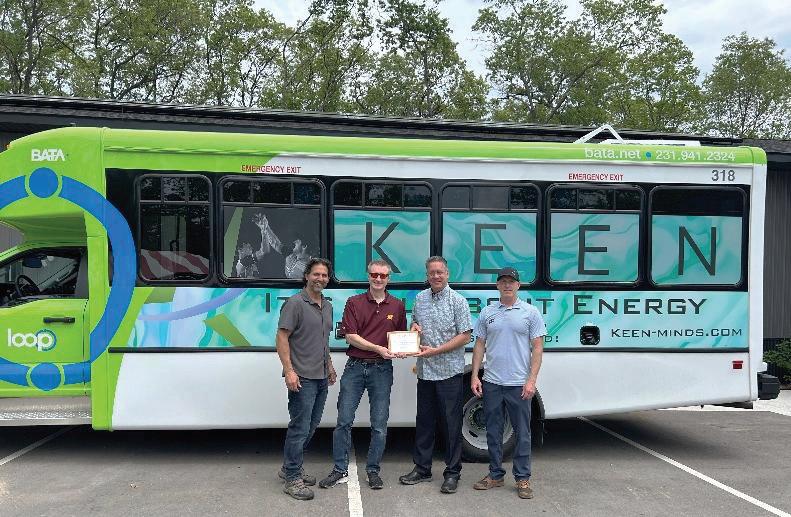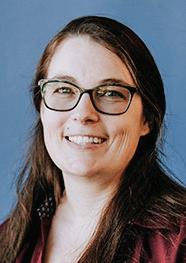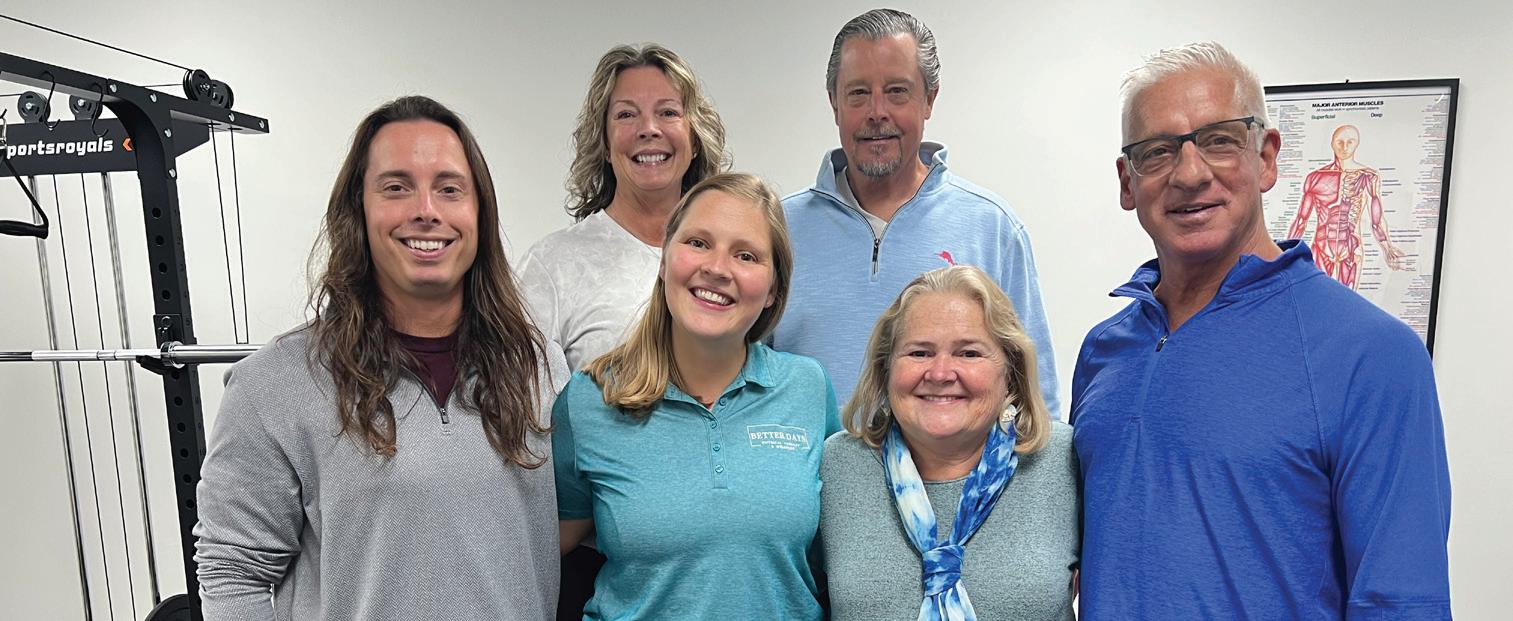










Traverse City Office 236 1/2 E. Front Street, #26 Traverse City, MI 49684 231-943-6988
Main Office 5931 Oakland Drive Portage, MI 49024 269-385-5888 or 888-777-0216
• We uphold a Fiduciary Standard and work with clients on a fee-only basis.
• We do not receive commissions, kick-backs, or soft dollars from product sales, eliminating inherent conflicts of interest.
• Our team of professionals holds designations and degrees such as CFP®, CFA, CPA, MBA, JD, and PhD.
• Charles received his MBA from the Kellogg School of Management - Northwestern University, his MA in Economics from WMU, and Executive Education from Harvard Business School and Columbia University. Charles Zhang, CFP®, MBA, MSFS, ChFC
• Ranked #1 on Barron’s list of America’s TOP Independent Advisors for 2024. Charles has achieved the #1 ranking three times within the past four years.*
• Ranked #4 in the nation on Forbes’ list of TOP Wealth Advisors and is the highest-ranking Fee-Only Advisor on the list.*
Minimum investment: $1,000,000 in Michigan/$2,000,000 outside of Michigan. Assets under custody of LPL Financial and Charles Schwab.

The Michigan State Housing Development Authority recently awarded a $500,000 Employer-Assisted Housing Fund (EAH) matching grant to Munson Healthcare. The EAH Fund is backed by $10 million in state funding and offers direct support to employers that contribute matching funds through cash investments, land donation, a below-market interest loan, or a combination to help develop new housing options. With the matching grant, Munson will create a housing stipend for those who commit to a 24-month employment contract within the healthcare system. Munson estimates they will be able to hire between 40-60 additional employees using the program.

Delamar Traverse City recently celebrated the grand opening of Maison, the newest addition to the hotel’s culinary offerings. Maison is an all-day cafe with coffee, local baked goods, and other breakfast and lunch offerings. Maison then transitions to the hotel’s lobby bar in the evenings.
Eighteen employers in northwest Michigan have been awarded a total of $577,927 in cycle two of the 2025 Going PRO Talent Fund (GPTF), supporting training for 273 employees. Two-thirds of awarded employers included apprentices in their training plans — underscoring a strong regional focus on long-term talent development. “Grants like the Going PRO Talent Fund have a profound impact on the employers we serve,” said Rob Dickinson, regional director of business services at Northwest Michigan Works! in Traverse City. “These investments are giving local companies the tools to build sustainable workplace cultures, reduce turnover, and win more contracts.” Area companies that received awards include Cherryland Electric Cooperative, Lear, Promethient, Skilled Manufacturing, Dan Brady Painting, Thirlby Clinic, and Elk Rapids Engineering.
Northwest Michigan Works! and Northwestern Michigan College have expanded the region’s ability to train the next generation of skilled electric vehicle (EV) technicians by obtaining $120,000 in state workforce development funds. Funded through the State of Michigan’s Electric Vehicle Jobs Program, the initiative supports both employers and workers in the rapidly evolving mobility sector. Northwest Michigan Works! partnered with NMC to provide EV Jobs Program funding for the Automotive Technology Program, allowing the college to scale its hybrid and EV training capabilities for enrolled students. Approximately 50-75 working automotive technicians will now receive EV training annually and support a pipeline of EV-ready talent for northern Michigan employers.
JetBlue recently announced the start of its summer-seasonal service between Cherry Capital Airport and Boston Logan International Airport, operating Thursdays, Saturdays and Sundays through October 25. “This expansion not only enhances travel options but also strengthens the visitor economy – an essential driver of prosperity for our region,” said Trevor Tkach, president and CEO of Traverse City Tourism. “Supporting tourism and connectivity is vital to our continued growth, and this new addition marks another step forward for our community.” JetBlue joins American Airlines and Delta Airlines with seasonal direct flights to Boston Logan.

Grand Traverse Resort and Casinos recently celebrated the grand opening of its renovated Leelanau Sands Lodge in Peshawbestown. The redesigned lodge features 51 updated guest rooms, including elements that reflect the heritage of the Grand Traverse Band of Ottawa and Chippewa Indians. “This renovation is about more than aesthetics – it’s about creating a space that welcomes our guests with the spirit of the land, culture, and community,” said Jesse Ward, GM at Leelanau Sands Casino & Lodge, in an announcement about the renovated property.
















The Cobblestone Farm, a wedding and event venue in Kingsley, is under new ownership. Tish Chase and Robert Valleau are the new co-owners of the 10acre property. “We’re thrilled to share the updates we’ve made to enhance the guest experience,” said Chase. The property features an 80-foot weatherproof structure, a Western-themed barn, a large dance floor, and its signature ‘Wedding Corral.’

TC Golf Performance Center has added a new, six-hole outdoor course called “The Rooster.” The course was designed for short game practice and gives golfers of any skill level an opportunity play in an environment reminiscent of a golf course. A grand opening for the new course will be held later this month. Learn more at tcgolfperformance.com.

consists of 15 townhome-style luxury condos at the intersection of Munson Avenue and Hamilton Street. Guests can rent by the unit, by the building, or reserve the entire property. Learn more at ogradydevelopment.com/hamilton-place.
JULY
Applications are still being accepted for the 2025/2026 Leadership Grand Traverse (LGT) cohort. LGT is a community-based program presented by Traverse Connect that prepares participants for decision-making leadership roles in areas such as policy, program implementation, and development. The program provides exposure to many of the major assets and leaders across our region, including natural resources, parks and recreation, community and economic development, health and human services, transportation, and agriculture. Learn more and apply at traverseconnect.com.

Traverse City has been recognized by culinary publication Food & Wine as one of the top small town in the United States for food and drink. The recognition is part of a larger feature from Food & Wine: the publication’s third annual “Global Tastemakers Awards.” Described as “a best-of list with a mission to celebrate culture, cuisine, and culinary experiences that are rooted in a true sense of place,” this year’s Global Tastemakers feature includes lists of the best American cities for pastry and coffee, the top 15 restaurants in the country, and more. Traverse City ranks number 11 on the 11-town list of the best small American cities for food and drink. Garnering specific name drops are business like Farm Club, The Cooks’ House, and Aerie , as well as Traverse City Tourism’s brand-new Traverse City Food & Wine festival, which is slated for August.



Discover a one-of-a-kind Northern Michigan estate
private frontage on two lakes, nestled on 16 acres with panoramic

views, a custom 3,165 sq-ft home, pool, gym, hot tub, and even a 6-site private campground for family & friends. Perfectly located between TC and Lake Michigan, this legacy retreat blends luxury, recreation, and serenity like no other.



Atlanta - ATL
Boston - BOS
Charlotte - CLT
Chicago - ORD
Dallas/Fort Worth - DFW
Denver - DEN
Detroit - DTW
Fort Lauderdale - FLL
Houston - IAH
Minneapolis - MSP
Newark - EWR
New Haven - HVN
New York - LaGuardia - LGA
Orlando/Sanford - SFB
Philadelphia - PHL
Phoenix/Mesa - AZA
Punta Gorda - PGD
Tampa/St. Pete - PIE
Washington DC - Dulles - IAD
Washington DC - Reagan - DCA
Cherry Capital Airport







Jody Barton, a single mom with a teenage daughter, says the stars aligned when she signed the lease for her apartment. Having a place of her own that she could afford, with her own bedroom, a well-equipped kitchen and comfortable living areas in a community near her employment and her daughter’s school was a dream come true. For Jody, like for so many of us, housing truly means everything.
Jody’s landlord, who made this dream a reality, is Homestretch Nonprofit Housing Corporation, a Community Housing Development Organization (CHDO) founded in 1996 in Traverse City. It was established in response to the regional shortage of affordable housing with a clear mission: to develop affordable housing that meets diverse needs, including those of working families, retirees and veterans.
Today, Homestretch continues to fulfill this mission. Executive Director Jon Stimson says it’s not just about bricks and mortar.
“...[I]t’s about dignity, opportunity and stability. It’s about people and building trust with our tenants, homeowners, and communities,” he said. “I’ve seen what it means for someone to finally have a place to call home. It’s not just a roof over their head. It’s stability for their kids; it’s the ability to save money; it’s a fresh start.”
The critical need for affordable housing in our 10-county lower northwest Michigan region is well-documented. According to the Housing Needs Assessment (HNA) commissioned by Housing North in 2023, the gap is 8,813 rental units projected through 2027. The largest gap, estimated to be 5,014 units, is for households earn-
EDITORIAL & BUSINESS OFFICE
P.O. Box 4020 Traverse City, MI 49685 231-947-8787
ON THE WEB
tcbusinessnews.com
PUBLISHER
Luke W. Haase lhaase@tcbusinessnews.com
CONTRIBUTING EDITOR
Gayle Neu
gneu@tcbusinessnews.com
HEAD WRITER
Craig Manning
STAFF WRITER
Art Bukowski
COMMENTARY BY CHRIS MACINNES
ing up to 50% of Area Median Household Income (AMHI), roughly $50,000 per year or less. Approximately 43% of these renters are considered “housing cost burdened” meaning they’re paying more than 30% of their income toward housing, with 23% being severely cost burdened, paying more than 50% of their income.
Developing quality, workforce affordable housing is challenging and complicated, but Homestretch has successfully overcome many of these hurdles. Yarrow Brown, executive director of Housing North, Northwest Michigan’s Rural Housing Partnership, says that “without nonprofit organizations like Homestretch, we would not have affordable housing in our region.”
Not only is the need great from a quality-of-life perspective, but it also impacts our region’s economic health. In the HNA, 74% of employers cited affordable housing as a major factor in their ability to attract and retain workers.
Josh Mills, Frankfort city manager and president of Housing North, describes affordable housing supply as “the critical infrastructure that drives future economic growth and quality.”
So, what are the key ingredients that enable Homestretch to “move the needle”?
There is no single factor; it’s a combination of elements, including design approach, construction and furnishings, a culture of partnerships and collaboration, public and private sources of capital, and the ability to develop at a scale that fits the needs and capacity of smaller, rural communities.
Homestretch applies innovative materi -
CREATIVE DIRECTOR Kyra Cross Poehlman
CONTRIBUTING WRITERS
Ross Boissoneau
Kierstin Gunsberg Rick Haglund
COPY EDITOR Becky Kalajian
WEB PRODUCTION: Byte Productions
MAILING/FULFILLMENT
Village Press
DISTRIBUTION Marc Morris
SERVING
Grand Traverse, Kalkaska, Leelanau and Benzie counties
als and construction processes that save money without jeopardizing quality. For example, they use panelized construction and mass timber, which are cost-effective, more durable and energy-efficient. In rural areas that may not have natural gas service, they use electric heat pumps as the energy source, which are both efficient and environmentally friendly. Interior and exterior designs are attractive, with high-quality fixtures and appliances. Their multi-family properties are not only affordable to build and operate, says Stimson, but are “where people feel happy and healthy –where they want to be. “
Another key to their success is garnering support from a broad range of partners to access funds and resources, including state and local governments, commercial lenders and community development financial institutions. Organizations like Housing North, Traverse Connect and the Grand Traverse Regional Community Foundation are also supportive. But for every project, Homestretch’s most important partner is the community. This means listening carefully to city, township or village leaders, respecting their voices, and developing plans that complement that community’s vision, master plan and zoning requirements.
A great example is the recently completed Lake & Main development in Frankfort, now home to 12 families with incomes that average between 60% to 80% of AMI ($43,562 to $72,603). It is in the heart of the city and close to jobs, schools, healthcare, shops, beaches and the Betsie Valley Trail. City Man-
AD SALES
Lisa Gillespie lisa@northernexpress.com
Kim Murray kmurray@tcbusinessnews.com
Kaitlyn Nance knance@northernexpress.com
Abby Walton Porter aporter@northernexpress.com
Michele Young myoung@tcbusinessnews.com
ager Mills, who worked closely with the Homestretch team on this project, describes them as “AWESOME partners” in a development that increases the affordable housing supply in Frankfort.
Location is another key ingredient. Warren Call, CEO of Traverse Connect, says that Homestretch’s ability to develop housing in rural communities, even where there may be a lack of infrastructure and planning resources, benefits the regional economy.
I am excited to speak firsthand about another Homestretch project in rural Benzie County: Crystal Commons, in Weldon Township, which is less than a half-mile from Crystal Mountain. For more than 25 years, we have looked for a partner to develop safe, high-quality, affordable workforce housing that is close to jobs, schools, childcare, recreation and public transportation. Our donation of land to Homestretch for the Crystal Commons project speaks to our belief that this project will help build a stronger, healthier community for all.
Though shovels are not yet in the ground, we are grateful that Homestretch is continuing to do what it does best: take the long view, applying a formula that not only improves the quality of life for individual families but also that of entire communities … because housing means everything.
Chris MacInnes is president of Crystal Mountain. In 1985, she and her husband Jim moved from California to join this business and together have led its evolution. She is also active in state, local and industry organizations.
The Traverse City Business News Published monthly by Eyes Only Media, LLC P.O. Box 4020 Traverse City, MI 49685 231-947-8787
Periodical postage qualification pending at Traverse City, MI.
POSTMASTER: Send address changes to The Traverse City Business News, PO Box 1810, Traverse City, MI 49685-1810.
The Traverse City Business News is not responsible for unsolicited contributions.
Content ©2025 Eyes Only Media, LLC. All rights reserved.
EYES ONLY MEDIA, LLC
By Art Bukowski
Adam Inman is co-owner of Francisco’s Market & Deli at the very busy intersection of Silver Lake and Zimmerman roads on the west side. The shop’s strategic location combined with its relentless dedication to good food has made it a go-to for killer take-out pizza (including their world-famous breakfast pizza), sandwiches and more. Inman is a hands-on owner who is rarely at his cramped desk space, but he gave us a peek anyway. If you have an idea for a From the Desk Of feature, please email abukowski@tcbusinessnews.com.


1. I do all the shopping for the store. I’m the Aunt Millie’s guy. I’m the milkman, the Lipari guy, the Carmela guy. If we run out of something, I’m on my way to pick it up. And with all the orders we have, if I don’t write it down in a notebook, I’m going to forget.
2. I love my weekly golf league. It’s a really good group of guys. With two little kids and the stress of work and parenthood, I don’t get out as much as I used to. So on Wednesday, no matter rain or shine, we’re going out golfing.
3. That’s my German Pilsner hat from Silver Spruce Brewing. They moved in next door last year and it’s been great. We do all the food for them over here. It’s been pretty harmonious.
4. That’s just the deposit from yesterday. I do all the back-end work – the payroll, the deposits, the banking stuff. I file all the invoices and receipts, all the QuickBooks stuff. Anything that has to do with either getting paid or paying somebody, that’s my job.
5. When we bought this place in 2016, we were known as the store with the big liquor wall, but food to go is now a huge thing for us. I sold food for 10 years before doing this and my business partner is a chef, and with our powers combined we’re really starting to shine with food. We’re doing the little
things that make a huge difference. People really love our pizza, sandwiches and soup.
6. You’ll almost never see me without a hat on. I was in sales for years before buying the shop, and I had to dress up. The best part of this job is I can wear a baseball cap and sweatshirt every day and still be a professional. It’s a nice change of pace.
7. Music is a big part of our culture in here. I’m in here every day at 6am cracking eggs, and we crank up the music. It’s kind of refreshing to come in and see the big guy singing under the hood. It’s not real groggy here in the mornings when you come in to ‘90s hip hop.
8. Here’s a few good bottles we’ll save for special customers. We have a great liquor selection, but if we could, it would be even better. It’s just been very difficult over the last handful of years to get product in the store. A lot of these big companies, you’ve got to play their game to get the good stuff. So we’ve just been trying over the last handful of years to kind of play ball.
9. My co-owner and manager Michael Krenzke [on the right] is the whole reason this place is what it is. He has a deep passion for food and wine, and he’s the reason our food is so high quality. He’s also been a sommelier for over 10 years now.

By Art Bukowski
With more than $230 million in annual sales, nearly 600 employees and more than 6,000 customers in 45 countries, it’s clear that Petoskey Plastics is one of the most prominent companies in the Little Traverse Bay region.
And while those are indeed impressive figures, management is perhaps most proud of other stats. In 2024 alone, for instance, the company recycled nearly 40 million pounds of old plastic, diverting it from landfills and incorporating it into state-of-the-art new products that serve a wide variety of markets.
A recycling program that began years ago as a simple business opportunity for a young firm is now a key part of Petoskey Plastics’ operations and identity. As more and more consumers demand sustainable products, these practices are also increasingly vital to the company’s appeal and continued success.
At 50 years and counting, the company recently opened a plant in Texas and is poised for continued growth. The TCBN checked in with President Jason Keiswetter to find out what’s next for his family-owned and industry-leading firm.
What’s now a relative juggernaut began in a Petoskey pole barn in 1969. Duke Keiswetter, his son Paul and a couple of employees started using a single machine to make relatively simple plastic bags for a variety of applications.
Petoskey Plastics’ early days were promising but bumpy, and the company flirted with bankruptcy within its first five years. “We just needed time, in my mind,” Paul said in an interview collected for the company’s 50th anniversary. “I had confidence that we could survive, but how were we going to do it?”
A loan from the federal Small Business
“Anybody can put plastic in an extruder and regrind it and make a pellet, but then what are you doing with it?
Our ability to take millions of pounds a year of landfill-bound plastic and [give it] another life separates us in the market of plastics.”
- Jason Keiswetter, President, Petoskey Plastics
Duke had been in the restaurant business for a short time, but he wanted to find a new, stable opportunity for success. He came with a background in plastics, earlier running a company in Detroit that produced a variety of plastic and injection-molded components for the automotive industry.
Administration for new equipment and operations costs helped shore things up. A short time later, Paul reinvested earnings from a massive government bag contract into new equipment, allowing for further stability and growth. It wasn’t long before the company moved into a much larger facility along U.S. 31 near Bay Harbor.
In 1978, the company made its first venture into recycling plastics when Paul convinced Dow Chemical to sell him thousands of used plastic bags. Petoskey Plastics cleaned these bags, ground them up and turned them into new products, starting what would eventually evolve into a major segment of the company’s business model.
The 1980s saw another huge springboard as the company broke into the automotive market with Slip & Grip, a protective seat cover that could be counted on to stay in place during the vehicle manufacturing process. The company patented and began producing millions of these covers.
The 1990s were a time of significant expansion with Petoskey Plastics’ recycling programs. The company received a roughly $1 million grant from the state for additional equipment that transformed plastic waste into pellets for new applications. It became one of the first North American companies to successfully recycle low-density, post-consumer plastics on a large scale and use them in new products.
The turn of the century and first decade of the 2000s saw Petoskey Plastics acquire large facilities in Tennessee and Indiana to provide faster ship times and lower freight costs to customers throughout the country.
Company leaders also opened a new corporate headquarters in downtown Petoskey. In 2021, the company opened a manufacturing plant on the outskirts of Dallas in McKinney, Texas, an expansion intended to capitalize on proximity to raw material suppliers and shorten delivery times for West Coast customers.
Jason Keiswetter, Paul’s son, says that Paul has often remarked that people thought they were crazy for starting a manufacturing company way up in northern Michigan, far away from the supply chain and potential customers. Looking back, it makes the ride all that more fun.
“We’re going to make a bag company in northern Michigan, and no one could really imagine that we’re going to become this multi-state, multi-national customer base, but here we are,” Jason said.
Petoskey Plastics now sits with four major facilities and six divisions that provide hundreds of mostly blown-film plastics products to the automotive, medical, construction and institutional markets, among others. These products include a dizzying variety of bags, protective sheeting, medical gowns and much more.
About 70% of their products are sold to domestic customers (including more than 25 Fortune 500 companies), though the overseas business is not small potatoes.
“We’re thrilled to have our headquarters right here in Petoskey, Michigan, and our main plant – our original plant – is still in Petoskey. There’s a lot of pride in being here and supporting the many families that we have here.”
- Jason Keiswetter, President, Petoskey Plastics
Duke Keiswetter died in 2015 at age 94. Paul has transitioned to chairman and CEO, while Jason is now president. The past few years have been a rough ride, Jason says, with COVID, inflation, supply-side issues and more, but what hasn’t killed the company truly made it stronger.
“It’s really been a challenging four years, but we’re still here and we’re continuing to grow,” he said. “We survived all of it, and I’m pretty proud of that.”
The current economy and political climate also present plenty of uncertainty, but also opportunity. A drop in imports, for example, allows for growth in the retail sector.

“I’m seeing it on both sides. We had to pay a tariff on some equipment we brought in, but it’s also opening a lot of doors for us to quote new business because a lot of our products are heavy traffic in imports,” he said. “So I’m talking to companies I haven’t talked to before … and here we are at the table with a domestic supply option.”
Jason is glad to have the Texas plant up and running, particularly since planning for it began right before COVID shut the world down. Now, it’s onward and upward.
“Our investment into McKinney is very exciting. The infrastructure is behind us. We’ve done the heavy lifting, we’ve been through COVID and all of those
other things,” he said. “Now we’re going to be able to refine and execute on a different level than we have before.”
Still, despite this continued nationwide growth, the company’s heart remains where it was born and raised.
“We’re thrilled to have our headquarters right here in Petoskey, Michigan, and our main plant – our original plant – is still in Petoskey,” Jason said. “There’s a lot of pride in being here and supporting the many families that we have here.”
Jason has traveled the world and has found no better place to live and work than Petoskey, he says. Being a major player in the plastics industry is icing on the cake.



“We’ve got a good reputation in the market, and we’re respected in the market. Having that clout coming from northern Michigan, well, it really doesn’t get much better than that,” he said.
The company has strong worker retention, with many employees racking up multiple decades of service.
“Our associates really make the company, and … my hat’s off to them,” Jason said. “Most of them have known me since I was a kid, so that’s kind of fun, too. I’ve got a lot of parents running around the factory.”
Part of this is probably because the company continues to invest in its employees, a tradition dating back to when Paul partnered with North Central Michigan College about 20 years ago to create the first-ever college program in the country specifically designed to train skilled plastics workers – and then sent his employees.
“Immediately after they graduated, they got a four dollar an hour raise, but I wanted to get them educated the best I could [so they could] feel good about themselves and understand more about the industry,” Paul said in the 50th anniversary interview.
Investing in employees is more important than ever, Jason says, considering how hard it can be to keep them around.
“You really need to take training and make an investment into lifting their knowledge, because they have options, and they can move, and they can go and you’ve got to treat them right,” Jason said. “At the
end of the day, we have to give them the tools. A lot of people want to learn and better themselves.”
Paul’s initial foray into recycling Dow Chemical’s old bags more than 40 years ago was a “cost play,” Jason says – a clever move from a hungry young company. Who would have thought it would become a Petoskey Plastics signature?
“It’s evolved into high-speed recycling of landfill-bound plastic, and we’re remanufacturing it into everything from bags to seat covers to retail trash bags with drawstrings on them,” he said. “It’s been a journey from a situation where we just were looking for ways to compete, but now we’re competing and doing great things for the environment [at the same time].”
Plastic gets a bad rap, understandably so in many cases. But Jason points to studies that show a relatively low environmental impact with recycled plastics.
“We are a perfect example of it being real. We’re doing it every single day. We’ve been doing it for 20, 30 years,” he said. “And there’s people jumping on board, and we’re helping those people figure it out as well.”
While processing discarded plastic is the critical first step in the recycling process, Petoskey Plastics is also skilled at turning these recycled plastics into new products.

“Anybody can put plastic in an extruder and regrind it and make a pellet, but then what are you doing with it?” he said. “Our ability to take millions of pounds a year of landfill-bound plastic and [give it] another life separates us in the market of plastics.”
Company engineers are constantly developing new applications for recycled plastic, often combining it with virgin plastic for a strong, versatile product. The company recently invested more in its research and
development department to stay on top of the market.
“Most companies have one monolayer, and you can only put so much post-consumer in that product, but everything we do is multilayer. We have 65% post-consumer content [in a lot of products], and we’ve been toying around with 100% blends,” he said. “So we’re always pushing the limit and leading that front edge on the post-consumer content side.”


By Ross Boissoneau
The economic losses for the ice storm that ripped through northern Michigan early this spring are still being tallied.
A survey by the Northern Lakes Economic Alliance, which serves businesses in Antrim, Charlevoix, Cheboygan and Emmet counties, projects losses approaching $6.5 million. That does not include the cost of repairs, cleanup, or financial support to their employees. All told, the Michigan State Police estimate recovery efforts will cost upwards of $200 million, according to a report from the lobbying firm Michigan Legislative Consultants.
Gov. Gretchen Whitmer declared a state of emergency in 12 counties due to the ice storm that hit March 28 and lingered for three days. Virtually the entire area lost power due to the ice storm. Presque Isle Electric & Gas CEO Allan Berg said at the height of the outage, less than 1% of the customers in the affected area still had electricity.
Otsego County was one of the hardest hit areas.
“We were closed for 10 days and lost everything in the cooler,” said Denise Gilling, manager at the Pine Squirrel Bar & Grill in Gaylord.
She says the devastation was unlike anything she’d ever experienced. Yet just outside the area it was as if there hadn’t been a storm at all.
“It was strange and creepy,” she said. “My brother lives on Torch Lake. I drove there and it was like nothing happened.”
With everything down – no electricity, radio or cell service, impassable roads and no gasoline available for cars or generators for 60 miles – it took several days just to get the power flowing again.
“It was worse than the (Gaylord) tornado,” said Gilling, as it lasted so much longer.
Bob Wilson, who handles human resources and finance at Otsego Resort, concurred.
“It went through like the slowest-moving tornado,” he said.
He says most of the resort’s buildings and golf course were spared, but the woods surrounding it were devastated.
“It looks like a war zone,” Wilson said.
The costs for restaurants and grocery stores included not just loss of sales, but loss of product.
“We lost all of our perishable foods. We saved what we could but we have to prioritize food safety in all decision-mak-
ing, so we erred on the side of caution,” said Michael Walter, CEO of the natural foods store and co-op Grain Train in Petoskey and Boyne City. Fortunately the losses were covered by insurance.
At Crooked Tree Breadworks between Petoskey and Harbor Springs, Assistant Manager Isaac Winnell says one big concern was the company’s sourdough starter. It has been used for the company’s signature breads for more than 30 years.
With owner Greg Carpenter out of town, it was up to Winnell and staff to make sure it remained viable.
It came down to frequently feeding it.
“I would take water to a relative’s home with a gas stove, then put it in a thermal container,” Winnell said. “Nobody wants to see the starter die.”
While the starter survived, after the power came back on they discovered the bread oven wasn’t relighting properly. The bakery turned to more scones and pastries. Winnell said there was a significant uptick in sales of those items the first few days post-storm.
“We’d sell out every single day of everything we could make,” he said.
Nikki Devitt, president and CEO of the Petoskey Regional Chamber of Com-
merce, says virtually every industry took a financial hit.
“For retail and restaurants, the impact was immediate. For maple syrup, it’s a lasting impact,” she said.
A report from Michigan State University Extension Service puts losses for this year at an estimated $3.5 million in bulk syrup sales. In addition, many maple trees were destroyed, putting future production in jeopardy. As one example, Maple Moon Sugarbush and Winery of Petoskey faces losses of $280,000 in lost syrup over the next two years, with $250,000 needed to clean up and rebuild the infrastructure.
Dale Forrester’s Maple Dale Farm in Atlanta taps 10,000 trees and produces 5,000 gallons of syrup annually. He told Michigan Farm News the storm destroyed a third of his crop, with another third of his trees experiencing significant damage. One harvester quoted in the NLEA report said that the storm destroyed so many of its trees that it will not be able to make syrup for at least three to five years, with an annual loss of revenue of $140,000 minimum.
The destruction of millions of trees also dealt a huge blow to Michigan’s forest products industry. It contributed $26.5
billion to the state’s economy in 2022, according to a report from the Michigan Department of Natural Resources. Approximately one million acres of forest were affected by the ice storm, according to the Michigan Department of Natural Resources’ Forest Resources Division.
The utility companies likewise suffered a huge financial hit. According to Bridge Michigan, Alpena Power Company, one of the four energy providers serving the area, spent about $2.5 million restoring power after the storm. That is five times the company’s typical annual budget for storm restoration. In addition, the outages will cost the company about $300,000 to $350,000 in lost revenue.
Workers replaced over 2,500 poles, triple the average for an entire year. Berg says Presque Isle alone had to replace 3,600 miles of wire. Both Berg and Devitt said they heard over and over from the outside crews (more than 1,500 from across the country came to help) that wherever they were from and whatever else they had been through, they had never seen anything like the destruction from this storm.
While the storm is over, the damage is ongoing. Jon Demming, the head of Otsego’s County’s Emergency Services, said those trees which survived but were damaged are now more susceptible to disease, insects or other challenges. He brought in a forester to assess the damage and provide advice for how to deal with it.
The after-effects are not just financial. Devitt says the emotional reaction is lingering and is the least-talked-about after-effect of the storm.
“Whenever there’s a high wind day or thunderstorm you tense up. It’s a collective trauma,” she said. “We had a clinical therapist talk to a women’s luncheon.”
The sound of the snapping branches and falling trees was common, and Devitt said she still flinches when she hears a snapping sound. Gilling said things would be calm, then suddenly there would be sounds like gunshots.
“It was eerie and strange,” she said of the atmosphere.
Sarah Snider, owner of Poetess & Stranger gift shop in downtown Petoskey, says surviving the off-season is hard enough, and getting hit with a natural disaster at the end of March was financially painful.
“January through May is a gauntlet. In April, almost all service industry and retail businesses are limping to the finish line, and it’s the locals who have sustained us,” she said. “I can’t imagine what it has been like for the businesses that lost product, infrastructure, transportation.”
Now businesses and residents hope for financial assistance from the government while working to clear the debris. Teams from Michigan State Police, Emergency Management and Homeland Security Division (MSP/EMHSD), the Federal
Emergency Management Agency (FEMA), U.S. Small Business Administration (SBA), and local officials conducted damage assessments. The SBA’s presence means low-interest disaster loans may be available to qualifying homeowners, rent ers, businesses and nonprofits.
“The governor’s emergency declaration was one of the first pieces for (potential) FEMA funding,” said Devitt.
She praises the generosity of business es and neighbors helping one another, noting some were grilling food out in the middle of the street for residents. Snider runs a food pantry at her shop and was able to take food to the Odawa Casino’s warming center.
“On Sunday I spent time at North Coast Work charging our family’s phones and computers. They remained open many days for people to warm up, charge phones, etc.,” she said. “High Five Spirits was serving freshly made food to anyone stopping by.”
Such community-minded efforts con tinue. Walter says that a consumer co-op, Grain Train, is guided by seven principles. One of them is “concern for community.”

He says the management team decided one way to do that was to hold a sale to help the community restock pantries and refrigerators. “Community Days” offered customers $25 off for every $100 spent for all shoppers, owners and non-owners, May 2-4.
The next test comes as summer visitors
says she hopes they realize what the region has been through as the story fades from the headlines.
“I hope visitors have patience and understanding,” Devitt said. “I hope they go out to eat, buy locally. We need the support.”



By Rick Haglund
In the 30 years since its first resident arrived, Bay Harbor has morphed into a $1 billion resort featuring hundreds of multimillion-dollar homes, a yacht-filled harbor, a luxury hotel, a shopping and dining village, and a 525-seat performing arts center.
Its 27-hole golf course, designed by the late, prolific course architect Arthur Hills, has been called “the Pebble Beach of the Midwest.”
The 2,400-acre resort, bordered by five miles of stunning Lake Michigan shoreline, has an outsized impact on one of the most desirable regions of the state. It’s half the tax base of Petoskey, population 5,800, and employs about 1,000 full- and part-time workers.
What was once the site of an abandoned, decaying cement plant and limestone quarry has been transformed into an oasis for the well-heeled.
“To have that third resort creates another jewel in the crown [beyond Boyne Resorts] that makes this region so special,” said Jim Powell, executive director of the Petoskey Area Visitors Bureau. “Its presence is pretty awesome.”
Bay Harbor is located south of Petoskey in Resort Township. But an agreement 25 years ago between the city and township transferred Bay Harbor’s property to the city. Under the so-called state 425 agreement, Petoskey provides water, sewer and public safety services to the township while the city gets most of Bay Harbor’s tax revenue.
“I think the 425 serves both parties effectively,” said Petoskey City Manager Shane Horn. “Having access to utilities allows the township to grow. And we’re able to do a lot of things because of the tax base of the development.”
Among those things are improvements to Petoskey’s parks and other public spaces, Horn says. One proposed project would connect Bay Harbor to the Little Traverse Wheelway, a 26-mile, paved bike path that runs from Charlevoix to Harbor Springs.
“We’re always looking for ways to partner with them,” Horn said about the relationship between Bay Harbor and Petoskey. “We pay attention to their desires and needs.”
Bay Harbor even has a representative on the Petoskey City Council. Joseph Nachtrab, a retired certified public accountant who has lived with his wife full time at Bay Harbor for the past 25 years, was appointed in January to fill a vacancy on the council.
Bay Harbor at 30 years
cements reputation as one of the Midwest’s swankiest resorts
Nachtrab says he got involved in Petoskey politics when some of the resort’s residents voiced concerns about their property tax assessments. There are about 200 people living at the resort who are registered to vote in Petoskey. Nachtrab ended up serving on the city’s board of review and has worked as an

election inspector.
Winter-time sports attracted Nachtrab and his family to northwest Michigan decades ago.
“We were living in Toledo and used to come here for skiing; never in the summer,” he said. “My wife got a flyer in the mail announcing the Bay Harbor development and we just fell in love with it.”
bunch of rich people living behind the gates,” but says that’s unfair.
“I’ve gotten to know a lot of people in Bay Harbor,” he said. “So many of them have integrated into life in northern Michigan and care deeply for its people.”
He cites the Bay Harbor Foundation, which has given nearly $3 million in scholarships and grants to community organiza

The resorted was dogged for years by toxic pollution from the cement plant that operated on the property for more than a century before it was acquired by Detroit-area developer David V. Johnson and CMS Land, a division of CMS Energy, the parent company of Jackson-based Consumers Energy.

(Johnson later built Oil Nut Bay, a luxury resort at Virgin Gorda in the British Virgin Islands. He and his wife own what Dbusiness Magazine reported is a $40 million, 8,000 square-foot home on the property. Johnson was not made avail-
able for an interview for this story.)
Bay Harbor’s owners tangled with state and federal regulators – and each other – for more than a decade over the 2.5 million cubic feet of buried toxic cement kiln dust that was leaching into Lake Michigan. The environmental catastrophe received national media attention, including unflattering stories in the Washington Post and the Chicago Tribune.
CMS exited its partnership with Johnson in 2002 but agreed to foot the bill for a cleanup that cost the utility owner $315 million, according to CMS. A remedia-

































tion agreement reached with the state in 2012 requires the resort to monitor its leachate collection system indefinitely, according to a summary of the problem by Resort Township.
The system “is exceeding expectations,” said Denny Brya, the resort’s general manager, adding that the lake is safe for swimming by resort visitors and homeowners. “It’s normal day-to-day operations.”
Bay Harbor was literally blasted into existence in 1994. Explosives took down the cement plant’s smokestacks and later a portion of the shoreline, allowing 2.5 billion gallons of Lake Michigan water to rush into the former limestone quarry, creating the yacht harbor.
“A project of this magnitude will put this region, indeed, on the nation’s map, if not the world’s map,” then-Gov. John Engler said as he helped detonate the charges that blew up the cement plant.
Early on, rumors spread that entertainment world celebrities, including Madonna, had purchased homes at the resort. Brya says the rumors weren’t true. Most of Bay Harbor’s property owners, mostly from the United States, made their bones in the business world.
“We call all our owners famous,” said Brya, who has worked at Bay Harbor for 30 years.
In addition to its early environmental headaches, the resort has navigated
through several difficult economic periods. The worst was the Great Recession, which culminated in the historic Chapter 11 bankruptcies of Chrysler Corp., now Stellantis, and General Motors Corp. in 2009.
Business also slowed during the COVID pandemic in 2020. But the pandemic also drew home buyers who could work remotely and decided they wanted to do it in a magnificent setting.
“We had people move here from California and they never went back,” Brya said. “We’ve always had challenges. Things are always changing but it seems like we adapt well to the changes to make things better.”
Today’s uncertain economic climate, fueled by a trade war and turmoil in the Middle East, so far hasn’t slowed Bay Harbor’s development momentum.
The resort recently sold a piece of property where a 120-room Hyatt Place hotel will be built. The hotel should attract a wider range of visitors with lower room prices than the swanky 105-room Inn at Bay Harbor, where rooms can run more than $1,500 a night.
And a new residential development, Village Heights at Bay Harbor, will offer 25 “high-end” condos in the resort’s marina district, Brya says.
“For the most part, we still see a strong market,” he said. “We’ve got more demand than supply right now.”


Bay Harbor milestones
• 1994: Cement plant smokestacks are imploded and Bay Harbor Lake is created in a former limestone quarry
• 1995: First resident moves into Bay Harbor
• 1996: Bay Harbor Yacht Club and Bay Harbor Golf Club open
• 1998: Inn at Bay Harbor opens
• 2000: Village Beach opens
• 2002: David V. Johnson acquires CMS Energy’s ownership interest and becomes sole owner
• 2004: Bay Harbor Foundation is formed
• 2016: Great Lakes Center for the Arts breaks ground
• 2017-2024: Several new residential projects and marina expansion take place
• 2025: Hyatt Place Hotel and the Village Heights at Bay Harbor condo project are announced





How northern Michigan’s community cinemas are surviving the streaming era – and why we need them to
By Kierstin Gunsberg
Hitting the cinema has been a lot less popular since the pandemic. That’s when the U.S. box office saw a drastic 80% drop while quarantine cemented the comfort (and affordability) of staying in to watch movies on the couch.
Now, even as audiences slowly return, northern Michigan’s community theaters are still figuring out how to compete in a homebody economy where streaming rules the scene.
To pull those homebodies away from the living room, The Bay Theatre in Suttons Bay is leaning into nostalgia.
“We very much want to preserve that friendly, kind of old-school vintage feel where you come in and there’s a nice, smiling face at the counter,” said Rick Andrews, board president of the nonprofit that operates The Bay, which is also Leelanau County’s only movie theater.
“You go in and it’s a smaller theater and the prices are always as affordable as we can make them.”
With just one screen and 187 seats, The
Bay has been a staple on St. Joseph Street since opening in 1946. But when its previous owners announced in late 2018 that they planned to close the venue with only a few weeks’ notice, Andrews and others in Leelanau feared losing more than just their local film-hub.
“The community said, ‘No, this is an important gathering place, an important
day still depends on volunteers. And not just the ones serving popcorn and checking tickets.
“There’s a lot that goes on behind the scenes too,” Andrews said. “We have a programming team that meets every week. These volunteers look at what movies we should get, what movies are possible and available.”
“We very much want to preserve that friendly, kind of old-school vintage feel where you come in and there’s a nice, smiling face at the counter.”
– Rick Andrews, Board President, The Bay
place for culture, pure entertainment, and education,’” recalled Andrews. “‘We can’t let it go … what do we do?’”
What they did was form a volunteer-backed nonprofit to take ownership of The Bay and keep its iconic double doors open.
Seven years later, The Bay now has a small paid staff, including a general manager, but the bulk of its day-to-
Altogether, he said, it takes more than 100 volunteers to pull off everything from year-round upkeep on the historic 70-yearold building to social media management.
Besides offering a nostalgic spot to catch a flick, Andrews points out something that The Bay offers that streaming never could – a boon to nearby businesses, as movie-goers kill time before and after their showtime by stopping into the
shops and restaurants surrounding it.
“To us, it’s a real anchor for the community,” he said. “And not just for Suttons Bay – for the broader county at least.”
Nonprofit by necessity
If survival in the streaming era is the name of the game, then staying financially solvent is the biggest objective for community theaters like The Bay. That’s what made the transition from a privately owned movie theater to a nonprofit so crucial to its longevity.
Because as it turns out, movie theaters operate on pretty thin margins.
“The actual business of selling concessions and movie tickets doesn’t fund [The Bay],” said Andrews. “We probably lose money on that. I’m sure we do lose money on the actual business of the theater.”
Andrews also notes that while The Bay expects to sell close to 15,000 tickets this year, a sign that sales are rebounding from their pandemic low, smaller venues have fewer opportunities to offset operating costs with ticket sales alone, especially since a portion of that revenue goes back to the studios who make the films that grace the marquee.

With just one screen, The Bay can only offer one or two screenings a day, limiting both ticket and concession sales compared to multiplexes like Traverse City’s AMC Cherry Blossom, which can run more than 50 screenings every day.
Non-profit status and the fundraising and sponsorships that come with it help to narrow the margin between maintaining a historic building and the high cost of running a movie theater.
“This past year we invested $120,000 into a new laser projection system,” said Andrews. “So we’ve got a state-of-the-art
projection system that was funded by little donations from the community.”
Meanwhile, the newest Tom Cruise action flick or Disney animation isn’t the only thing that attracts donations and ticket sales. The Bay’s board and volunteers have learned that the sense of community and access to the arts that spurred them to save the little cinema in the first place is indeed one of its biggest draws.
In the last few years, The Bay has added live events like concerts and comedy shows to its lineup, contributing to gains like last year’s 56% increase in net profits

over 2023. They also offer annual memberships ranging from $30 to $1,000 and exclusive benefits to go along with each tier.
One of their biggest campaigns has been the Made in Michigan film series that features special showings of movies filmed in the Mitten State along with cast and director panels.
“When we do those things, we definitely pull people from further away and pack the house,” Andrews said.
Offering a more personalized, niche experience to film aficionados and those
looking for something more engaging than two hours gazing up at the big screen is a tactic that other nonprofit community cinemas in northern Michigan have capitalized on. Traverse City’s State Theater, Elk Rapids Cinema, The Garden Theater in Frankfort and The Lyric Theatre in Harbor Springs – which all became nonprofits in the last two decades – have implemented similar strategies, offering a mix of meet and greets, memberships and budget-conscious family-focused screenings on top of major releases in order to hit each viewer demographic.




Hitting all of those demos is one of the greatest challenges of running a nonprofit community cinema, explains Scott Langton, executive director of The Lyric, which has three screens. Hollywood, he says, tends to release all its blockbusters at once and May through August, when those earlier-mentioned homebodies are more likely to peel away from the couch and seek out air-conditioned entertainment. The rest of the year, smaller or less in-demand films tend to get dumped, leading to long lulls in ticket sales.
Case in point is 2025’s two biggest titles so far – the family-friendly “A Minecraft Movie” and the action-horror “Sinners” – were both released within two weeks of each other. That creates a real dilemma for limited-screen venues like The Bay and The Lyric, which can only run up to a few movies simultaneously.
So when Wes Anderson’s latest postmodern flick “The Phoenician Scheme” was scheduled to hit theaters at the end of May, Langton had to decide if it could hold its own against a slate of guaranteed box office draws like Disney’s live-action “Lilo and Stitch” and the eighth “Mission Impossible” installment.
With just three screens, it couldn’t.
“I have to push [“The Phoenician Scheme”] into August,” he said, while the film plays on for weeks at larger multiplexes. “And so that’s the toughest thing.”
That’s one reason Langton wants more high-profile releases pushed into the shoulder seasons. He referred to off-season successes like “A Complete Unknown,” the Bob Dylan biopic released on Christmas Day 2024.
“That brought in 2,000 people,” Langton said, adding that the Timothée Chalamet feature helped carry The Lyric through the doldrums of January. “So

it would have been nice if I would have gotten three more [hit] movies in January, February, March and April that [also] brought in 2,000 people.”
As The Bay’s Andrews pointed out earlier, the economic effect of a community movie theater ripples beyond the box office. Those 2,000 “A Complete Unknown” moviegoers weren’t just supporting The Lyric, they were also dining at Harbor Springs restaurants and shopping downtown.
“We usually bring in about 40- to 50,000 people a year through the downtown area,” said Langton.
Like The Bay, The Lyric has also found that offering both first-run blockbusters and arthouse films not found at the typical multiplex is pivotal to building a loyal and diverse audience.
“People come from 45 minutes away because they want to see the programming that we have,” Langton said.
A part of the greater non-profit cinema community, Langton adds that’s a trend that other nearby cinemas in tourism-driven towns like Frankfort’s Garden Theater are capitalizing on. Recently upgraded with a multi-million-dollar solar panel system funded by donations, the venue is one of the few year-round entertainment options for the town’s 1,200 residents.
Reflecting on a recent visit to Babcock Ranch, a brand new 18,000-acre planned community near Punta Gorda, Florida, Langton says he was struck by a surprising omission.
Despite the focus on a commerce-forward design that includes multiple restaurants, ice cream shops and retail outlets, not one development included a movie theater.
“I thought, ‘Gosh … you just need a movie theater,’” he said. “Right smack down in your beautiful square here to transform everything about it.”

Our team is committed to building lasting relationships and supporting your health through preventive care and ongoing management. We want the very best for you and your family.




By Payton Heins, columnist
“Up North” – in our case the counties of Antrim, Charlevoix, Emmet and Cheboygan – is most often thought of for our incredible Great Lakes shorelines, inland waterways, ski resorts and miles of trails. We are a beloved destination for visitors which has made tourism such an important piece of our economic landscape. What is often lost in this image of “Up North” is the opportunity that exists in other sectors.
While tourism is a major economic driver, our region is also home to a strong and diverse base of manufacturers, construction firms and other industries. Our natural assets have also created unique opportunities in the outdoor recreation, marine-related, food processing and wood products industries. These industries provide family-sustaining career opportunities spanning diverse fields and skill levels.
Our region offers a compelling combination for talent and entrepreneurs: economic potential paired with an exceptional quality of life.
Like many rural regions across Michigan and the nation, we face challenges. Each year, the Northern Lakes Economic Alliance (NLEA) conducts direct outreach to our primary employers across the region, and in 2025 we added a new survey tool to better monitor the challenges and opportunities companies in our region encounter. The top two barriers to business growth voiced by business leaders in the region remain recruiting and retaining talent and workforce housing. Employers across the region are eager to hire but continue to struggle in finding both skilled and entry-level workers. Manufacturers also report concerns of a dwindling interest from young talent in manufacturing as a career path, further constraining their talent pool.
While state and national demographic trends are contributing to the challenge, there are positive signs for our region: U.S. Census data shows that the number of prime working-age individuals (25 to 54 years old) has been growing for three consecutive years. This reflects a newly emer-

Survey shows 42% of region’s businesses plan to expand within the next four years, most in the manufacturing
gent national trend of rural revival driven by the in-migration of young adults.
The traditional talent pipeline has not kept pace with demand, but employers continue adapting, offering competitive wages and incentives, going to great lengths to invest in training, and finding alternative talent pipelines. The region’s robust Career Technical Education programming and North Central Michigan College’s unique fast track programming further complement these employer-led efforts. Simultaneously, businesses are investing in technologies to increase automation and maximize efficiencies that lower their overall dependence on labor.
Regulatory and policy issues also remain top of mind for business leaders, ranking third as a key concern. Yet despite these hurdles, the region’s business community is growing. Many manufacturers are expanding, and the outlook is optimistic.
Last month, the NLEA released our Economic Pulse Report, providing a snapshot of the latest regional quarterly trends, including major business expansions and the top economic issues currently on the minds of local community and business leaders. The report highlights survey results showing 85% of the region’s businesses reporting stable or increasing sales. Even more encouraging, 42% of respondents plan to expand their physical
footprint in the region within the next four years, most of them in the manufacturing sector. These businesses range anywhere in size from five to 350 employees, averaging in the 50s for employee count.
Businesses in our region share many of the concerns felt elsewhere in Michigan and nationwide. While our challenges may not be unique, our opportunities are. By building a stronger talent pipeline, expanding housing options, and overcoming development hurdles, we are accelerating economic growth. More young talent and families are choosing rural communities like ours, drawn by the natural beauty, year-round recreation and quality of life. Though housing development has not kept pace, progress is being made with hundreds of new workforce housing units coming online this year.
The NLEA works to support a stronger and more resilient year-round economy by partnering with businesses and communities in our region. We assist businesses in securing tax abatements, incentives, and low-interest loans for physical expansion, equipment and other key growth initiatives. We also maintain an inventory of available industrial and commercial sites for businesses looking to expand or
relocate to the region, while serving as a bridge between the public and private sector to navigate regulatory hurdles. By fostering a supportive environment for business growth, we are laying the foundation for a more resilient and prosperous regional economy.
Northern Michigan is at a pivotal moment. With strategic investments for the future, our region is poised to outgrow our perception as a tourism economy – retaining and attracting more entrepreneurs and new talent wanting to pursue their diverse professional interests, while enjoying the many benefits of living where others choose to vacation.
Payton Heins is the president and CEO of Northern Lakes Economic Alliance, a regional economic development organization. She brings extensive experience in economic and community development from her previous leadership roles in the public and private sectors. She holds degrees from Michigan State University and the University of Michigan and is a certified economic developer with the International Economic Development Council. Visit www.TheNLEA.com to learn more about NLEA services and to download the Economic Pulse Report.
Wyant Technologies serves as local businesses’ IT department, including networking, security and, yes, AI.
TCBN: You sure fly under the radar! Most people might not recognize your brand, but we asked some business owners about trusted technology partners, and the Wyant name kept coming up!
Tom Wyant: That is great to hear. And yes, we tend to keep our heads down and solve IT problems for our clients!
TCBN: What is your “elevator speech,” or what you say about your business in fifteen seconds?
Wyant: We are the IT partner for northern Michigan businesses. We are their IT department, providing whiteglove service for networking, cybersecurity, phones, computer systems, and AI solutions.
TCBN: And is the arrangement typically on an on-call basis, or hourly, or what?
Wyant: We only work with clients on a fixed-fee basis. Clients can budget for their IT needs with confidence, knowing there are no hidden expenditures. With Wyant, you have a whole team to help with your issues. We like to consider ourselves an extension of your staff.
TCBN: What is on the minds of local companies these days in terms of technology?
Wyant: Quite a bit, as always. But the two most prominent things we hear are security and, more recently, AI.
TCBN: Give us an example of two or more of the local companies you are helping.
Wyant: We have worked with the likes of Forest Area Credit Union and Benzie Leelanau District Health Department for over a decade. World Magnetics and Hemming& Wealth Management are newer clients, and by that, I mean in the last three years. As of my last check, we’ve worked with a majority of our clients for at least 10 years.
TCBN: And I am guessing those organizations have encountered some technology issues you have solved.
Wyant: Oh yes. For Forest Area Federal Credit Union, security and compliance are top priorities due to the annual audits they undergo. We work closely with their IT director to ensure they are adequately covered. When we first started working with them, they had four branches, and they are now up to seven, with more growth still to come. World Magnetics came to us after their network had been breached multiple times. We came in and locked it down. We have controls in place, the data is locked down so people can only see what they need to, and they have secure remote access to their network resources.
TCBN: What about the health department? How did that go with COVID?
Wyant: We needed to get them set up to work remotely as quickly as possible, so we implemented an always-on VPN to enable them to work from anywhere they had internet access. Their data and equipment are secure, and they can access everything they need. We also help them with their HIPAA compliance.
TCBN: Are email hacks still common?
Wyant: Yes, we provide security awareness training to our clients, so they understand how to identify phishing emails and social engineering. End users are a key factor in network security, so we proactively educate them on how to recognize potential scams.
TCBN: And AI is now seeping into all kinds of local businesses, correct?
Wyant: Quickly. And here again, there are risks. Many people are unaware that their ChatGPT interactions, for instance, are potentially exposed to the public, so we assist companies in finding

TCBN: And you will also help small businesses with the other tech things they do not want to deal with, like phones, new computers, and equipment?
Wyant: Absolutely. Tedious, annoy-
ing, or complex, we handle all technological needs for our clients, and we have been doing this for over two decades. I would encourage anyone reading this just to reach out and ask if we can help with their challenges!
For more information, call 231-946-5969 or visit gowyant.com

By Art Bukowski
Every employee knows what they earn, right? The paycheck comes in and the dollar amount is right there. Simple stuff.
But what about all the rest? Contributions for healthcare and retirement savings. Special deals on the company’s products or services. Discounts on gym memberships, childcare or other amenities. Paid time off. Matching charitable contribution dollars. The list goes on.
While the number of perks or benefits varies widely depending on the employer, almost all full-time employees get something, and many at larger employers are getting substantially more than their direct pay alone.
Once everything is added up, that $60,000 employee might be getting $75,000 to $90,000 worth of total compensation. So why not tell them that?
Total compensation statements (TCS) itemize all aspects of an employee’s compensation, including benefits, incentives and other perks. A dollar amount is provided for each, giving a clear picture of the employee’s total compensation in terms of actual monetary value. Some statements, often called total rewards statements, also include non-financial benefits like compa-
ny culture and career growth.
These statements are not new, but they may be particularly useful in an increasingly competitive environment where many employers are having a very hard time finding and retaining employees.
First and foremost, human resources leaders say that while employees are prob-
to nearly 600 full-time workers.
“It allows them to see what the total investment is that we’re making in people, because it really is pretty significant,” McClyde-Blythe said. “The first year we rolled out the statement, I had quite a few people that asked me if that’s really how much the spend was.”
Many employers also provide these statements to prospective employees as part of the recruiting process. Interlochen has put
“If I have an employee who’s being poached by another company, I’m going to say, ‘Hey, you know what? Let’s take a look at this.’
And I’m going to pull out that total compensation statement. You’ve got to go apples to apples, and this is the tool for that.”
-
Rob Hanel, Board Member, Traverse Area Human Resource Association
ably aware of their benefits, it can be quite surprising to see the total price tag.
Interlochen Center for the Arts started using TCS not long after Tifini McClyde-Blythe arrived as associate vice president for Human Resources in 2020, and she said they were immediately eye-opening for employees. Like most other employers, Interlochen now provides them annually
considerable efforts into attracting talent, and part of that is a nice package of benefits that can be summarized on a TCS.
“I think [TCS] help us in being a destination employer because they give people more information to make more informed decisions,” McClyde-Blythe said. “It’s transparency about the value of what they’re getting, and I’ve talked to quite a few really
savvy people who, when they get job offers, create a table of the pros and cons and all of the things they’re gaining or losing if they decide to go somewhere else.”
At Interlochen, the gains end up being pretty persuasive.
“If somebody’s looking for the bottom line of how much their paycheck is going to be every week, a total compensation statement isn’t going to help them change their decision,” she said. “But if you value things like free meals, tuition discounts, going to concerts for free … it makes it harder for you to consider other employers.”
Rob Hanel is director of people and space (a fancy term for HR director) at TentCraft, a Traverse City company that employs about 90 people. He’s also on the board of the Traverse Area Human Resource Association, a group of local HR professionals.
Hanel has used TCS throughout his career, and he speaks highly of their role in helping to attract – and keep – great employees.
“Total compensation statements have been around a long time, and they have been very consistently used amongst
groups of employers who fully understand the value of retention,” he said.
It’s often too easy for an employee to be wooed by another company that offers a bump in base pay. Hanel is quick to remind that employee that they need to look at the whole package carefully before making a decision.
“If I have an employee who’s being poached by another company, I’m going to say, ‘Hey, you know what? Let’s take a look at this.’ And I’m going to pull out that total compensation statement,” he said. “You’ve got to go apples to apples, and this is the tool for that.”
TCS are also a great tool for providing transparency, building trust and boosting appreciation for the employer, Hanel says. And there’s nothing wrong with an employer trying to “get credit” for all of the perks it provides, he said.
“It’s like ‘Oh great, the company’s patting themselves on the back again trying to show me all the great things they do for me,’” Hanel said. “But that is in fact what we’re trying to show, and from my HR seat, if I can help an employee appreciate an employer, [that’s a win].”
Michele Shane is head of school at the Children’s House, a private, nonprofit Montessori school in Traverse City. The school has used TCS for several years, allowing employees to see things like tuition discounts (which are significant considering the school’s tuition costs) and other perks.

Shane feels these statements are important for many reasons, not the least of which is the relatively low pay offered to teachers in general.
“You can never pay a teacher enough, and it’s tough because we only have so many levers we can pull to make sure everyone is taken care of,” she said. “Sometimes people see their hourly wage or their annual salary and wish it were more, and we all do, but it’s also important for people to understand how much the organization invests in employees in ways


above and beyond the salary.”
Shane hopes that TCS helps employees feel better about their overall compensation.
“When folks can see that bottom line, I think emotionally it feels a lot better than just looking at your hourly wage or your annual salary,” she said. “And on the organization side … we want folks to know that this matters to us and taking care of our employees matters.”
Shane also believes that TCS are a good opportunity for employees to learn about the tough decisions administrators have to

make to make when faced with ever-increasing healthcare costs and other pressures.
“It’s a really delicate balance between people getting raises so that they can have money in their pockets, but also continuing to maintain high quality healthcare,” she said. “So, when people don’t understand why they’re not getting bigger raises every year, we can say, ‘Well, this is now what our outlay is for your family for healthcare.’ So I think it really benefits people to be able to see the bigger picture of the way the budget works.”


By Craig Manning
In February 2022, the Traverse City Business News ran one of its biggest and most ambitious cover stories ever: “The Relocators,” a spotlight on 28 professionals who had found their way to northern Michigan in the midst of the global pandemic. We’d heard a lot, in the first two years of COVID-19, about how office shutdowns and widespread pivots to remote work had unshackled millions of people from big cities for the first time in their adult lives, in turn sending them in search of more tranquil environs. Our thought was to test that theory, and to see how many movers and shakers we could actually find who had chosen to switch their zip code to Traverse City. As it turned out, there was no shortage of northern Michigan newcomers who fit the
Then: When we met Gallagher, he was the president and CEO of Faber-Castell USA, the Cleveland, Ohio headquartered arm of the global corporation known for making pens, pencils, and other art supplies. Gallagher had been leading American operations for the company since 2003, part of a 40-plus-year corporate career that also included jobs as director of sales and marketing job at LEGO and the general manager of USA operations role for Playmobil.
Why TC: Speaking to the TCBN in 2022, Gallagher explained that he and his wife had spent years eyeing the town of Lake George, New York as their eventual retirement destination. Then they discovered Traverse City, and plans changed.
“(Traverse City) just completely knocks out Lake George,” Gallagher said at the time. “Before moving here, it was a combination of outdoor feel, beauty and vibe, not too small, balance of life, people, seasons, and Midwest location (that attracted us). Later, I have learned that there is such an interesting opportunity to connect the area’s appreciation of creativity with talent and passion as a means of impacting the community and providing great futures for generations to come.”
Now: Gallagher stayed on at Faber-Castell – and continued splitting time between Traverse City and Cleveland – until April 2023, when he finally took his final bow with the company after a
nearly two-decade stint. After a six-month break, he formed an LLC called 4 the Win, under which he continues to take on speaking, lecturing, mentorship, and consulting engagements. It’s been a big pivot in his life, and not just because he’s now spending almost all of his time in northern Michigan.
“It’s been a huge change, and I think anybody in my position would say that,” Gallagher said. “Just the routine, and the cadence, and the busyness level. Now, I have something that for most of my life I didn’t have, which is a lot of discretionary time.”
When Gallagher and his wife pinpointed Traverse City as their retirement destination, his assumption was that most of that “discretionary time” would go toward enjoying the natural beauty and reveling in the leisurely charms of a life no longer beholden to the demands of corporate work. What Gallagher didn’t expect was getting as involved with the local business community as he has.
“You can get a sense of the natural beauty when you’re just visiting here, but what you can’t measure and can’t experience until you actually live here is the people,” Gallagher explained. “I think that’s been the single biggest blessing [of moving to Traverse City], is the community.” Specific examples, he said, include mentoring entrepreneurs and businesses through Traverse Connect, being a part of Northwestern Michigan College’s Office of Possibilities (OOPs), and serving on the board of the Economic Club of Traverse City.
“We’ve got so many interesting people up here who are so willing to share, and
bill – so many that we had to put a cap on how many of them we actually wrote about. “The Relocators” ended up profiling 28 professionals, spanning multiple generations and hitting every industry from tech to medicine to entertainment.
Three and a half years later, the world has changed once more, and now the discourse is about how companies are winding down their remote work programs and calling their employees back to the office. It got us wondering: Where are our relocators now? Did they stick around in northern Michigan and put down roots here for good? Or have they left Traverse City behind, thanks to the reversion to pre-pandemic norms? And for the ones who did stay here, are they still in the same roles they were in 2022, or have they moved on to entirely new chapters?
We caught up with six of our original 28 relocators to ask these questions and more.

they’re super smart and they’re really passionate, and that makes it a great place to semi-retire like I have,” Gallagher continued. “It gives me that chance to do a bit of consulting, a bit of mentoring, and just a lot of think tank stuff. For example, I’ve gotten together with a handful of people over at NMC, and we’re talking about what a professional development curriculum would look like for young professionals in Traverse City. I’ve gotten to be a part of a lot of discussions like that, and
it’s been really fruitful.”
“I can’t imagine any other choice [of retirement spot],” Gallagher concluded. “I have friends who are down at The Villages in Florida, or they’re out in Scottsdale, Arizona – different places like that – and I can’t imagine being them. I feel so fortunate to be here instead, because there’s a lot of fun stuff left to do. There’s a lot of people to help, and a lot of great experiences left to have, and I can’t tell you how much my wife and I are looking forward to it.”
Then: At the start of 2022, this husband-and-wife duo were northern Michigan newcomers – a couple of University of Michigan graduates who had, in July of 2021, traded a life in Ann Arbor for one in Traverse City. Juntila, a U of M med school alumna, had recently taken a job as an anesthesiologist for Traverse Anesthesia Associates (TAA). Prasad, who went to U of M for undergrad before earning his law degree at Notre Dame, was working remotely with both a St. Louis-based firm called AEGIS Law (as a mergers and acquisitions attorney) and a Novi-based company called V1 Sports (as chief operating officer). V1 Sports, which makes golf swing analysis apps, had recently landed Michael Jordan as an investor.
Why TC: Juntila was hired at TAA straight out of her residency at U of M, so her compass was leading the couple north. And Prasad, whose work with AEGIS Law “has always been remote, even before the pandemic,” had little issue playing the part of “trailing spouse.”
Now: “My story’s not very exciting,” said Juntila, who is still working for TAA. “With medicine, it seems like everything
happens in four-year blocks. You have four years of undergrad, four years of med school, and then, for me, four years of anesthesia residency. After that, it’s out into the real world to find a job. And once you do that, if you like your job, you stay there for most of your career. Some of my colleagues have retired since I got here, and several of them had been at TAA for their whole careers.”
The story is similar for Prasad, who is still maintaining his remote M&A practice with AEGIS Law, and who spends much of his working hours at an office space at 20Fathoms. He’s also still with V1 Sports – though now, he’s the CEO rather than the COO.
V1 has thrived during the pandemic, Prasad said, thanks in part to the flexibility the remote work boom has afforded the business.
“We’re a relatively small company, of 25-30 people, but we have employees in Maine and Arkansas and California, and all across the country,” Prasad said. “We got to pick our teammates from a much wider pool than just Metro Detroit – myself included, as it turned out.”
If there was one challenge to Juntila and Prasad putting down roots in Traverse City, it was finding a place to call home. The pair moved to northern Michigan just as the region’s housing market was cresting into its post-COVID explosion, and
Then: Just fiancés when we last touched base in early 2022, Jack and Alicia (maiden name Radabaugh) had moved to Traverse City in 2020 for two reasons.
The first reason was family. Jack’s parents live here, and Alicia’s mom has relocated since the pair moved. The other reason was space, which was in short supply out in Santa Monica, where the couple lived prior to the pandemic.
Jack, who we described in the original Relocators piece as “a Jack-of-all-trades in the video production and voice-over audio space,” had always done much of his work from home, even going so far as to set up a recording booth in the closet to do voiceover work for audiobooks, videogames, and Pandora Radio. But COVID also meant a work-from-home situation for Alicia, who

their adventures in homebuying proved frustrating and fruitless.
“It took us four years to finally find a house,” Juntila said. “We put offers in on at least six different houses, and repeatedly lost out to people who came in with all-cash offers.”
Now: Now married, the Rutkowskis are still in Traverse City, but a lot has changed for the couple otherwise.
Alicia is now head of digital for a company called Branded Bills, an e-commerce business that specializes in custom hats and apparel. Based out of Mesa, Arizona, that job requires regular travel – mostly to the Branded Bills headquarters, but occasionally to overseas spots like Israel. Cherry Capital Airport and its nonstop flight to Phoenix/Mesa has made the arrangement a breeze.
For Jack, finding the right work groove in northern Michigan has been more of a challenge. Remote work opportunities have largely disappeared in the past two years – at least in his chosen line of work – and the rise in artificial intelligence isn’t helping matters. Finding equivalent oppor tunities in Traverse City, meanwhile, has proved difficult.

“Basically, up until the beginning of 2024, I was work ing remotely as the head of video production for a health and wellness company called Metabolic,” Jack said. “That company, unfortunately, kind of ran out of money, and it collapsed into a skeleton crew, which is still operating now, but it’s just a lot smaller than it was when I was directing their video production department. And since then, it’s actually been a little rocky for me. The remote work has dried up a bit in terms of just the types of roles that I would be looking for. And similarly, in Traverse City, there aren’t a lot of jobs for what I do, which is vid eo production, brand development, creative development, product development. That kind of background isn’t really something Traverse City is known for.”
Rather than wave the white flag and leave Traverse City behind for potentially greener pastures in bigger metropolitan areas, Rutkowski took an entrepreneurial path and launched his own product into the market

Eventually, the couple did find a house for themselves and their two sons, Aiden and Eli – the second of whom was born right here in Traverse City.
“And now that we finally found our house, now we probably can’t move for another hundred years,” Juntila chuckled.
place: an ultra-portable yard game called Flabocce. So HR,

Then: Just fiancés when we last touched base in early 2022, Jack and Alicia (maiden name Radabaugh) had moved to Traverse City in 2020 for two reasons.
The first reason was family. Jack’s parents live here, and Alicia’s mom has relocated since the pair moved.
The other reason was space, which was in short supply out in Santa Monica, where the couple lived prior to the pandemic.
Jack, who we described in the original Relocators piece as “a Jack-of-all-trades in the video production and voice-over audio space,” had always done much of his work from home, even going so far as to set up a recording booth in the closet to do voiceover work for audiobooks, videogames, and Pandora Radio. But COVID also meant a work-from-home situation for Alicia, who was working at the time as vice president of client success for the e-commerce company Flow.io.
Feeling cramped and cooped up in their small apartment, Jack and Alicia considered finding a bigger space in the Los Angeles area – an idea Jack said at the time “wasn’t the most attractive one” because of California’s expensive rental market. After road-tripping cross-country to visit Jack’s parents in Traverse City that summer, the two decided to make the trip permanent and put down roots in Traverse City instead.
Why TC: “We want to raise a family in an easygoing and natural – but still cool and thriving – environment,” Jack told the TCBN in 2022. “We can do the vast majority of our work remotely, and there is a super easy airport 15 minutes away for needed trips.”
Now: Now married, the Rutkowskis are still in Traverse City, but a lot has changed for the couple otherwise.
Alicia is now head of digital for a company called Branded Bills, an e-commerce business that specializes in custom hats and apparel. Based out of Mesa, Arizona, that job requires regular travel – mostly to the Branded Bills headquarters, but occasionally to overseas spots like Israel. Cherry Capital Airport and its nonstop flight to Phoenix/Mesa has made the arrangement a breeze.
For Jack, finding the right work groove in northern Michigan has been more of a challenge. Remote work opportunities have largely disappeared in the past two years – at least in his chosen line of work – and the rise in artificial intelligence isn’t helping matters. Finding equivalent opportunities in Traverse City, meanwhile, has proved difficult.
“Basically, up until the beginning of 2024, I was working remotely as the head of video production for a health and wellness company called Metabolic,” Jack said. “That company, unfortunately, kind of ran out of money, and it collapsed into a skeleton crew, which is still operating now, but it’s just a lot smaller than it was when I was directing their video production department. And since then, it’s actually been a little rocky for me. The remote work has dried up a bit in terms of just the types of roles that I would be looking for. And similarly, in Traverse City, there aren’t a lot of jobs for what I do, which is video production, brand development, creative development, product development. That kind of background isn’t really something Traverse City is known for.”
Rather than wave the white flag and leave Traverse City behind for potentially greener pastures in bigger metropolitan areas, Rutkowski took an entrepreneurial path and launched his own product into the market-

place: an ultra-portable yard game called Flabocce. So named because it is essentially “flat bocce,” Flabocce is played by throwing “Flabs” – flat, lightweight hexagonal discs made with non-toxic TPV and colored with foodgrade pigments – as close as possible to the “Jack,” or the target.
While Jack said that Flabocce is hardly a big money-maker – at least not yet – the game has developed something of a following in northern Michigan. The product officially launched to market last fall, and tallied some $16,000 worth of sales in the first six months, “without any paid marketing whatsoever.” Earlier this year, Traverse City’s Right Brain Brewery even hosted a Flabocce tournament. And just recently, Rutkowski secured a grant from 20Fathoms to roll out the first-ever digital marketing plan for Flabocce, which could help to develop more of a national pedigree for the game.
Behind the scenes, Rutkowski is currently in talks with a notable media personality, who is interested in Flabocce and could help it grow even further. More news on that front could be coming later this summer.












Then: Pre-COVID, Wiley was working in the thick of Chicago’s fast-paced real estate industry, where she was involved in nearly $100 million worth of property sales each year. When the pandemic hit, she moved to Traverse City and joined up with the Brick & Corbett Team at RE/MAX Bayshore Properties.
Why TC: In our February 2022 Relocators story, we tagged Wiley with the title “The Boomerang,” an oft-used term in northern Michigan circles to refer to local natives who find their way back to the region after starting their careers elsewhere. While Wiley had always felt the pull of Traverse City – she was born and raised here, still had family here, and wanted to raise her two sons here – the pandemic expedited her timeline.
Now: Expedited plans or not, Wiley was always sure that, once she moved back to Traverse City, it would be for good. But while a post-pandemic return to Chicago was never on her mind, there were things Wiley missed about the big city once she got to Traverse City.
“When I moved back, I had my license with RE/ MAX for a little bit, but my goal was to always introduce a boutique luxury brokerage to Traverse City, because I was coming from the Chicago market where there were just options that we didn’t have in Traverse City,” she explained. “So, two years ago, I made the decision to bring Christie’s International Real Estate to Traverse City, and I have been the sole local agent for the brand for two years.”
The Christie’s real estate arm was born out of the world-famous Christie’s Auction House. It now spans 10,000 real estate agents across 106 unique brokerages in more than 50 countries. In December 2021, the Chi-
cago-based real estate brokerage @properties purchased Christie’s International Real Estate, in a deal reportedly worth $444 million. That change in ownership proved serendipitous for Wiley and her dream of bringing something like Christie’s to northern Michigan.
“I didn’t directly work with @properties when I was in Chicago, but I worked alongside them the entire time I was there. So, I was very familiar with them, and I knew the founders,” Wiley said. The acquisition led to the launch of a Michigan-based affiliate, @properties REMI Christie’s International Real Estate, which is based in the Detroit area but soon added several offices throughout the state, including in Petoskey and Harbor Springs.
Wiley left RE/MAX for @properties REMI Christie’s in 2023. For years, she was the brand’s only Traverse City representative – an agent without a team or a firmly-established office.
“I would go downstate and get marketing materials and stuff, but I was basically working remotely with them and getting referrals from their downstate agents,” Wiley said of @properties. “We were basically just waiting for the right property to come up for our office, and the right partnership to make that happen.”
That “right partnership” eventually did materialize, between Wiley and luxury real estate development firm Freshwater Development. The company, founded by New York developer Andrew McCarthy in 2021, has made a name for itself quickly, thanks to high-profile redevelopment projects like the former Cousin Jenny’s building in downtown Traverse City, or what used to be the Dingeman & Dancer law offices on Park Street. Both buildings are being redeveloped into luxury condos – dubbed The Penthouses at 111 State and The Brownstones at 100 Park, respectively – though some space will be reserved in the former for the new @ properties REMI Christie’s office.
Design and build a functional, inviting space that supports growth and enhances the patient and staff experience.
Burdco transformed our space into a beautiful and functional facility that exceeded our expectations. They worked closely with our committee, incorporating feedback from all sides to find solutions that worked for everyone. Their positivity, budget-conscious approach and commitment to delivering on promises made the process seamless and we’re thrilled with the results.

The office will play host to Wiley’s growing team, which now includes nine agents in addition to her.
Meanwhile, the partnership with Freshwater Development – for which Wiley now serves as director of sales and marketing – will continue beyond the opening of the new office. McCarthy made his move from New York to Traverse City permanent last fall, and Freshwater is getting more aggressive in its mission to acquire, redevelop, and preserve buildings in Traverse City’s downtown core.
“Andrew spent 15 years in New York City, and his passion is in urban development,” Wiley explained. “His feeling is: if we don’t do it, no one else is going to be able to preserve historic Traverse City buildings. Anyone can build housing 10 miles out of town, but not as many could preserve these downtown buildings. I know some people may say, ‘Oh, it’s a shame that these buildings are being turned into condos.’ But a lot of times, the alternative is that they sit there vacant for years. Or they’re being underutilized, where some floors are in use and others are empty. If we put condos on the upper floors, the first floor can be retail space, and then we’re preserving the aesthetic quality of downtown.”










KEEN has completed the installation of a groundbreaking 604 solar panel system on the roof of the Bay Area Transportation Authority's (BATA) brand-new headquarters. This impressive array now stands as the largest roof-mounted solar installation in Northern Michigan, marking a s ignificant leap towards sustainability for the region's public transportation provider and underscoring KEEN's leadership in the local clean energy sector.











Traverse City Welcomes "Awesomeland": KEEN Energy and TC Millworks Unveil State -of-the-Art
Electrified Headquarters:
A new chapter has begun, unveiling the new fully electrified headquarters at 2351 North Aero Park Court. Dubbed "Awesomeland," the innovative facility is now home to KEEN Energy and TC Millworks, marking a significant step for both businesses in deepening their roots within the local community.
While KEEN Energy and TC Millworks may appear different on paper, their shared dedication to topquality services, community interest, and love for this big blue world, brought them together in this new venture.
For TC Millworks, this new building signifies a continuation of its legacy operations in Traverse City. Meanwhile, the KEEN family is excited to finally have a solid place to call home, further enabling them to support the local community. Both companies expressed gratitude to everyone who assisted them in bringing this vision to fruition and look forward to expanding and supporting their "Awesomeland".




By Craig Manning
How big is remote work in northern Michigan? A new community survey is underway to determine the answer to that question.
Back in May, Networks Northwest – the workforce, community and economic development agency that serves the 10-county area around Grand Traverse County – officially kicked off the “Northwest Michigan Remote Worker Study.” Funded by a grant from the Michigan Economic Development Corporation (MEDC), the project is intended “to gain insights into remote work trends though survey responses, focus groups, and data acquisition to create a regional report, expected in the fall of 2025.”
According to Networks Northwest CEO Janie McNabb, the study is essential because of the dearth of empirical data that exists around remote work in the Grand Traverse region. On the one hand, the rise of remote work during the COVID-19 pandemic is often credited for the huge influx of individuals and families that moved to the region during that period. On the other hand, McNabb says there has never been any attempt to quantify the impact of those migration trends, let alone assess how things look five years later.
“Anecdotally, we hear that a lot of people came here during the pandemic because they could [thanks to remote work], and this is where they wanted to be,” McNabb said. “But we don’t know how many people that was. We don’t know who they are. We don’t know where they came from. Did they bring spouses to fill open local jobs? Did they bring kids to enroll at our schools? A lot of that contextual information, we don’t really have. So, we want to pull all of that together and get a really good handle on the data.”
Nationally, there are big-picture statistics that offer a starting point for understanding the impact of COVID-19 on remote work. For instance, according to the United States Bureau of Labor Statistics, just “6.5% of workers in the private business sector worked primarily from home in 2019.” By February 2022, though, Pew Research Center was reporting that 59% of U.S. workers were working from home “all or most of the time.” And according to a 2023 report from the Economic Innovation Group, some two million people “fled America’s largest cities” between 2020 and 2022, opting instead for “suburbs, exurbs, and smaller cities” because remote work had given them new flexibility.
Looking at how those migration trends
“With the data from this study, we hope they’ll be able to better target either the remote workforce to come here; or the remote workers who are already here to fill open positions with local businesses as their remote work arrangements wind down.”
- Janie McNabb, CEO, Networks Northwest
impacted Traverse City and its outlying areas is the top priority for the new Networks Northwest project. However, McNabb also points to another angle that is fascinating her team at the moment: the widespread sunsetting of COVID-era work-from-home policies, especially at major companies.
From Amazon to Apple to AT&T to Disney to Google, many of America’s biggest employers have begun to enforce some version of return-to-the-office policies. The change has also played out on the govern-

ment level: On the very first day of his second presidency, Donald Trump signed an executive order mandating a return to the office for federal employees.
For remote workers in northern Michigan whose employers are urging a partial or total return to the office, Networks Northwest wants to know the next steps.
“Do those people want to stay?” McNabb asked. “Are they looking for jobs here – jobs that maybe could benefit our local businesses – instead of having to move
away again, or commute? Those are the kinds of questions we’re definitely asking.”
As far as McNabb sees it, there are really two paths forward for remote work as it relates to the northern Michigan economy. The first is that, as remote work dwindles on a national level, the workers who relocated to the region during the pandemic will have to decide whether to stick around. It’s a crossroads moment that could lead to an exodus of working-aged people from the Grand Traverse region. Or, it could just as easily pose a big opportunity for local employers to capture talent that until now has remained just out of reach.
“We know all our economic development organization partners are setting up talent attraction programming,” McNabb said, pointing to organizations like Traverse Connect, 20Fathoms, the Alliance for Economic Success, the Manistee Chamber of Commerce and the Northern Lakes Economic Alliance, all of which are collaborating with Networks Northwest on the Northwest Michigan Remote Worker Study. “Traverse Connect, for instance, has been doing Creative Coast for a while now, and it’s really gaining traction. But all the rest of them are looking at ways to attract talent now, too. With the data from this study, we hope they’ll be able to better target either the remote workforce to come here; or the remote workers who are already here to fill open positions with local businesses as their remote work arrange-
ments wind down.”
“We can also see an organization like 20Fathoms, which already has a pretty good connection to remote workers because of the co-working space,” McNabb added. “If there’s a remote worker who is being called back to the office but doesn’t want to move back, they don’t want to leave the region, then maybe they’ll be looking to start their own business, and 20Fathoms could help incubate that.”
While there will likely be some opportunities to convert remote workers into true local employees, though, McNabb expects many of the work-from-home professionals in the region will be able to negotiate some form of hybrid arrangement with their employers. In that case, those workers won’t convert to locally based jobs, but could still impact and interact with the local economy and workforce in several key ways: from buying up real estate, to driving further growth at Cherry Capital Airport, to taking advantage of networking and workforce development programming in Traverse City.
“Our economic development organizations definitely want to connect with the remote workforce,” McNabb noted. “So, based on this survey, they might start offering remote worker meetups or groups, just to further connect with different kinds of workforce across the region.”
Overall, McNabb sees remote work as both a challenge and an opportunity for


northern Michigan – a challenge because it introduces another variable of population growth to the region, with all the inherent growing pains that come with it; and an opportunity because it adds to the area’s business scene, brain trust, and connectivity.
“I think the key is being balanced,” McNabb said of that push and pull between challenge and opportunity.
“As the whole region looks to diversify our business sectors, there will be more and more use of remote work, whether it’s hybrid or not. We have to look at that as a real workforce reality. So, for instance, we’ve got a really powerful airport, and that’s part of the reason we’ve been a remote work destination. People can easily get to Chicago or other major centers where they have to work. The challenge there is the increase in traffic at the airport, forcing them to expand. But that work is going to happen, which is a big opportunity for us, too. I think we will continue to see a similar pattern in other areas going forward. All the things that remote work brings up as a challenge, will eventually

be turned more into opportunities – or at least be mitigated over time.”
The Networks Northwest remote work survey is live until July 7, after which the organization and its partners will offer a variety of focus groups around the region.
The full report from the Northwest Michigan Remote Worker Study is expected sometime this fall.


Energy is the key that unlocks the world of travel, turning every trip into an unforgettable experience. From the thrill of exploring new places to the joy of creating lasting memories with loved ones, energy is what makes it all possible.
With innovative energy solutions, we’re modernizing, protecting and maintaining our energy super systems to fuel travel and exploration today and into the future.


By Jennifer Ewing, columnist
As a human resources professional, I was shocked to read Shopify CEO Tobias Lütke’s statement, “Before asking for more headcount and resources, teams must demonstrate why they cannot get what they want done using AI.”
My immediate thought was, “The future is now, am I ready?” I had to take a step back and check where I stood. Am I open to how AI is going to integrate into the business world? And am I ready for how fast that shift is coming?
For years, AI felt like a tool reserved for large tech companies or highly automated industries. But we’re past that now. AI is here and it’s being used in real workplaces by real people, not just developers or data scientists. Tools like chatGPT, Jasper and Claude are working behind the scenes in HR offices, customer service departments, and operations teams. They’re drafting job postings, summarizing policies, scanning resumes and helping employees communicate faster.
It’s no longer a question of “if” AI will impact our work, but how quickly we’re willing to adapt.
In northern Michigan, where many employers continue to face staffing shortages, this conversation is especially timely. Finding and keeping the right talent remains a challenge, particularly for small businesses that can’t always compete on salary or benefits. AI isn’t a fix for every labor problem, but it offers something that’s been in short supply: time. AI tools can take on repetitive, low-value tasks and free up people to focus on more strategic, meaningful work.
The idea isn’t to replace employees, it is to make better use of the talent we already have. One person equipped with AI might be able to do the work of two or three, not by working harder, but by working differently. As someone who supports employee development, I see real opportunity here. AI allows us to shift away from administrative overload and into conversations about engagement, culture and leadership. These are topics that often fall through the cracks in busy workplaces.
It also changes how we think about workforce planning. Traditionally, when someone leaves or workload increases, we look to hire. But now, thinking of Lütke’s

quote, should we be asking a different set of questions? Can part of this work be done through AI? Can we delay a hire or adjust a job description based on new tools we’re using? Should we be budgeting not just for salaries, but for AI licenses and training? These are new considerations, but they may be just as important as traditional HR metrics.
One of the hardest parts of turnover is losing institutional memory. Processes, shortcuts and decision-making history often walk out the door with the person leaving. AI can’t replace experience, but it can store and retrieve information that helps close the gap. If we train these tools on internal content, like past communications, procedures or templates, they can help new employees get up to speed faster and reduce the sense of disruption when someone moves on.
Additionally, when workers have access to tools that help them write more clearly, solve problems more quickly or generate new ideas, they often feel more confident and capable. In the right environment, AI encourages experimentation and independence. Of course, this requires trust. If
employees feel like they’re being monitored or replaced by the same tools they’re using, that trust evaporates. But when AI is positioned as a support tool, something to make work better, not more stressful, the response can be positive.
Still, we need to be careful to not hand off all tasks to machines. Work still requires human judgment, emotional intelligence or the kind of creativity that AI can’t replicate. And in HR especially, where we’re dealing with people’s careers, emotions and conflicts, that human presence matters. The challenge is to find a balance. To identify which parts of the work AI can improve, and which parts need to stay personal.
Lütke’s quote may sound harsh at first, but I’ve come to see it differently. It’s not about eliminating jobs. It’s about asking better questions before we add them. Instead of assuming we need more people, we’re being asked to think through how work can be done, who’s best suited to do it and what tools are available to help. For many northern Michigan businesses, that might mean investing in both people and platforms.
This shift in thinking isn’t limited to
HR. Business owners, department leads, and team supervisors all have a role in reevaluating how work gets done. Whether you’re running a small clinic, managing a retail store or overseeing operations in a manufacturing facility, the question is the same: Do we need another person, or do we need to rethink the process? AI is becoming part of that conversation, not as a magic fix, but as a practical option worth considering.
Yes, there are plenty of AI articles out there. This is one more. But I hope it prompts reflection, especially in a labor market that remains tight. The pressure to find people isn’t going away, and the employers who take time to think differently about roles, tools and talent may be the ones best positioned to adapt.
Jennifer Ewing is part of Human Resource Partners in Traverse City, serving as a fractional CHRO to help employers align people strategies with business goals. To honor the topic, she wrote this piece with support from the same tools she’s writing about, showing how AI can strengthen presentation without replacing the human voice and creativity.

By Josh Traeger, columnist
A local business owner we work with –we’ll call her Linda – recently reached out in a panic.
She had posted a job ad for a front desk associate at her small business. The ad was heartfelt, funny and full of personality: “Must be high-energy, able to work evenings and have a smile that lights up a room!” It got dozens of applicants. One standout made it to the interview round – friendly, enthusiastic and wildly overqualified. Then came the mistake.
Linda, trying to connect, asked where the candidate lived. The applicant mentioned caring for an elderly parent, and Linda – again, just making conversation –asked if that would make evenings tough.
Two days later, she got a politely worded email: The applicant was withdrawing from consideration and raising concern about potential family status discrimination.
Linda was stunned.
“I was just being human!” she said. Of course she was. But in hiring – especially for small businesses – being human has to be paired with being careful.
Northern Michigan businesses need to navigate hiring the right way: legally, intentionally and in a way that reflects the best of your culture without exposing you to unnecessary risk. Here’s what Linda’s story (and others like it) can teach us about doing it better.
Job
That
Job descriptions set the tone. They tell the world what your business values and what kind of person might thrive there. But they’re also a legal document — and the words you choose matter.
Phrases like “young and energetic” can imply age bias. “Recent graduate” could be interpreted as excluding older applicants. And while “smile that lights up a room” might capture your culture, it isn’t a measurable job requirement.
Instead, focus on function and values. What skills are actually required to succeed? What does a successful day in the role look like? And what behaviors align with your organization’s mission?

The legal side of finding that perfect match
For one of our clients, we reworked a job description that originally required “strong physical presence” for a front-ofhouse role. We reframed it around communication skills, attention to detail and the ability to manage fast-paced customer interactions — all without risking claims of ableism or discrimination.
A good rule of thumb: If a requirement doesn’t tie directly to the core duties of the job, leave it out. Save the cultural flair for your team meetings and brand messaging, not your job postings.
In small teams, fit matters. That’s why most employers want to know not just what a candidate can do, but how they’ll work with others. The challenge is that informal interviews — over coffee, at your office, or even walking the property — can lead to legally sensitive conversations.
Questions about weekend availability, family obligations or even commute time can touch on protected categories under Michigan and federal law. While the intention is to understand flexibility or dependability, the risk lies in how a candidate interprets the question — and whether it seems tied to a hiring decision.
We encourage our clients to build an interview script centered on behavioral questions. Instead of asking, “Do you have reliable transportation?” try, “Tell me about a time when you had to overcome a logistical challenge to meet a deadline.”
Instead of, “Do you have kids at home?” try, “This role occasionally requires flexibility. How do you typically manage unexpected changes in your schedule?”
You’re still getting valuable insight — but in a way that respects boundaries and avoids assumptions.
Once you’ve selected the right person, it’s time to get it in writing — thoughtfully.
This is where many small businesses fall short. They send a quick offer via email, maybe attach a job description and hope that’s enough. But your offer letter, confidentiality agreement and onboarding materials form the foundation of your employment relationship.
Northern Michigan businesses need to navigate hiring the right way: legally, intentionally and in a way that reflects the best of your culture without exposing you to unnecessary risk.
At a minimum, your offer letter should include:
• Position title and responsibilities
• Compensation structure and pay schedule
• Employment classification (exempt or non-exempt; full-time or part-time)
• At-will employment disclaimer (standard in Michigan)
• Start date and reporting structure
• Any contingencies (e.g., background check, reference verification)
For roles involving client data, systems access or internal strategy, we strongly recommend a separate confidentiality and intellectual property agreement. And
if you don’t have a written handbook or policies yet — this is the time to start. We worked with one local business last year that hired a marketing assistant without defining who owned the work product. When the employee left, they took the content calendar, creative files and access credentials with them. All avoidable — with a few key clauses up front.
Hiring documents aren’t just about compliance. They’re your insurance policy against confusion, conflict and future disruption.
Where You’re Headed
For Linda, the incident became a learning experience. She ended up hiring a great candidate — with a revised job post, a new interview outline and a bit more caution in her casual conversations. She also now has a short, lawyer-approved handbook and a clean offer letter template she can reuse as her business grows. At True North Legal Group, we believe that’s the real goal of great hiring: not perfection, but clarity. Clarity about what the job entails, how decisions are made, and how your business handles its relationships — from day one.
If your business is growing this year, congratulations. That’s a meaningful milestone. Now take the time to ensure your hiring practices grow with you. Build a process that reflects your culture, respects the law, and supports your longterm vision.
Josh Traeger is the founding attorney at True North Legal Group, a Traverse City-based law firm that provides legal counsel to small businesses and nonprofits across northern Michigan. Learn more at www.truenorthlegalgroup.com.

For over a decade, Robin Whipple has been a driving force at Bay View Flooring & Design Center. Her expertise, dedication, and hard work have earned her a stellar reputation as one of the most respected and sought-after project managers in the region. Robin leads high-profile custom home projects, serves discerning clients, and maintains lasting partnerships with top builders—cementing her status as a leader in the local flooring industry. We sat down with Robin to get her insights on life at Bay View:
“I've enjoyed helping clients take their visions and make them reality. Everything from creating a spa feel, to a rustic cabin look. The various clients over the years all bring uniqueness to the table, and it's fun to see their thoughts and dreams come to life.”
“My go-to flooring choices vary by product category. In general, Shaw offers some of the best selections, quality, and customer service of any supplier, allowing us to purchase everything from carpet to hard surfaces from one source. Karndean (LVP) and Preverco (wood) also stand out within their respective categories. What truly sets these companies apart are the strong relationships developed over the years and their representatives’ responsiveness before, during, and after the sale
“One recent project that I’m especially proud of is the MidLake job on Torch Lake. This project stands out because it was quite complex, requiring our team to overcome several challenges. Through our hard work and dedication, we were able to exceed the client’s expectations. As a result, we’ve strengthened our relationship with MidLake, and they now look to Bay View Flooring as a trusted resource for their future projects.”
“IFC is on the top of the chart when it comes to newer products at great value. They have such a well rounded line up from the value-driven products, to the newest/hottest looks that customers and designers are looking for. ”
“I've had so much fun in the last 11 years at BVF, and 37 years in the business. I plan to stay on top of the changes in the flooring and tile business and offer my clients the best selections and service we've delivered in the past.”
“I love it when clients have developed a vision for their project in advance of our first meeting. If unsure, I suggest that they explore online. We can always recreate anything they see, but sometimes it needs to be value-engineered to keep their vision alive.”








By Craig Manning
Local mental health practice Adaptive Counseling & Case Management is experimenting with a subscription-based offshoot called Therapy North.
Most of Kevin DeBruyn’s patients have health insurance. So, when the time comes for billing, why have so many of them been paying for services with credit cards?
For DeBruyn, who owns the local mental health practice Adaptive Counseling and Case Management, asking that question ultimately led to the launch of a brand-new experiment called Therapy North. An offshoot of Adaptive, Therapy North gives patients the opportunity to pay for care via a subscription structure, rather than billing on a fee-for-service insurance-based model.
While DeBruyn says the jury is still out on whether the alternative model is something patients even want or need, he sees it as a necessary step to push the medical world forward as healthcare in
America becomes less affordable for the average person.
“With Adaptive, we work on an insurance-based model, providing traditional outpatient mental health services, contracting for care management services, and doing some educational stuff,” DeBruyn explained of his business, which launched back in 2013. “What we’ve been seeing just within the past year or two is that the amount of money that we were collecting from people via credit cards was really increasing.”
DeBruyn points to “increased co-pays and deductibles” as the reason for the change in consumer behavior. According to The Commonwealth Fund, in 2023 the average health insurance deductible for family coverage in the United States was $3,733, up from $2,640 in 2014. The increase is more pronounced for people who get their employer-provided insurance plans through small businesses (those with fewer than 50 employees), with the average family coverage deduct-
“It’s just more stable in terms of revenue, which has translated into us being able to offer a lower per session price for subscription customers.”
– Kevin DeBruyn, Owner, Therapy North
ible hitting $5,074 in 2023, compared to $3,810 in 2014.
“I know for myself, I get health insurance through the marketplace, and I’ve got a very high-deductible plan, and until that deductible is met, insurance does very little for me or my family,” DeBruyn said. “It’s the same with a lot of our

patients, and so there are a lot of people who are coming to therapy that are paying per session, and they are conceivably never going to hit their deductible outside of something horrible happening.” Therapy North, which launched last year, is designed to be slightly more affordable for patients than Adaptive’s

traditional insurance-based model.
Last year, DeBruyn and a few of the clinicians in his practice decided to try out a different model, to see if it could alleviate some of the woes of high-deductible insurance plans. Therapy North was born, both to give clients with challenging insurance plans a second option, and to open the door for uninsured or underinsured patients.
“We thought, ‘Maybe we can be helpful in those arenas,’” DeBruyn said.
The Therapy North model offers a variety of pricing tiers depending on what clients are looking for. There’s a a $180 per session “pay as you go” plan, a standard $200 per month option that includes up to two sessions each month, a premium one-session-per-week plan that costs $350 monthly, and a family/ couples plan for $650 a month.
Per DeBruyn, the pay as you go plan works out to “roughly the same per-session rate that we have at Adaptive, under our insurance-based model.” The other plans are designed to offer slightly more affordability and flexibility, and according to DeBruyn, those benefits can be just as positive for the clinicians as they are for the clients.
“There are definitely some interesting things about the subscription model that I like, and as things get going, I’m interested to see how they play out,” DeBruyn said. “One of the things we tend to see a fair amount of is cancellations. That’s totally understandable on the one hand; things come up. But if it’s a fee-for-service model, and you’ve got a 20% cancellation rate, that becomes a problem – especially in our line of work, where we generally only schedule six to
eight people a day. If one of those people cancels, that’s a pretty big chunk of your day that’s gone. And mental health counseling doesn’t really lend itself toward sneaking somebody else into the schedule, because a lot of times you’re seeing folks weekly or every other week. If one person is gone, you can’t really put somebody else in, because in a week, that other client is going to be back.”
DeBruyn says the subscription model adds stability.
“If somebody can’t make it in for any reason, we’re not dependent upon them showing up to every single appointment as scheduled in order to collect revenue,” he said. “They’ve paid for the month, and so we just reschedule them to wherever we have an opening and make sure we’re still hitting that monthly quota. It’s just more stable in terms of revenue, which has translated into us being able to offer a lower per session price for subscription customers.”
Despite the purported benefits on both sides, DeBruyn admits that patients “have not been banging down the door” to switch over to the Therapy North subscription model. Adaptive and its insurance-driven approach still remain the bread and butter for the practice and its therapists.
Part of the slow adoption, DeBruyn says, is that he and his practitioners opted for a slow rollout for Therapy North, “just to be able to get a feel for it, understand where the price point has to be in order to make it work, and try to figure out where the differences are in terms of utilization.” The subscription model also requires using different billing software


than the traditional fee-for-service model, which has also been challenging.
But another reason for the slow adoption is that many clients are simply hesitant to forgo their insurance for any healthcare-related cost – even if they are nowhere close to their deductible and end up paying out of pocket regardless. It might even be the same challenges that are inherent in the current insurance marketplace – rising premiums, high deductibles and pricey co-pays – that have more people wanting to feel as if they are getting their money’s worth by using that coverage as often as possible.
“Whatever the reason, it definitely seems like people are wanting to use their insurance more,” DeBruyn said.
Regardless of the slow adoption for Therapy North, DeBruyn is committed to keeping the option available for patients. As insurance plans continue to grow more expensive, he expects more people will start looking for alternatives. In fact, he already sees that sea change starting to happen locally, with providers like Table Health helping introduce more people to the concept of subscription-based medicine. DeBruyn wants to make sure his practice is on that cutting edge, if/when patients decide the insurance-based model has become untenable.
“Looking at the direction of healthcare generally, it feels really unsustainable,” DeBruyn concluded. “What happens when we reach that tipping point? Where do things change? Offering a subscription model hopefully gives us some stability, in terms of something outside of the insurance-based market that’s set up and ready to go.”



By Kierstin Gunsberg
Fifty-eight percent of Michigan youth report experiencing at least one adverse childhood experience, from violence to an unstable home environment. They’re early-life traumas that can lead to negative mental and emotional outcomes, especially for rural youth who face more barriers to resources.
That’s something that Kristin Molby and Carolyne Stolzenfels are working to change.
But instead of sitting behind a desk or working in a classroom, equine-assisted educators Molby and Stolzenfels are hiking up their muck boots and digging in with kids to tackle tough topics right from their barns, with the nearby help of their horses – an animal whose presence is scientifically proven to reduce stress in humans.
“Horses automatically change when working with children,” said Stolzenfels, who runs Wildfire Dreams, an equine Gestalt coaching practice on her 20-acre farm in Charlevoix.
Equine Gestalt is a structured, trauma-informed form of equine-assisted education.
While Stolzenfels is clear that she isn’t a therapist – “I’m not going to diagnose you,” she said – her 90-minute coaching sessions can be used in combination with traditional therapies and offers clients of all ages a safe space to explore the sources of their anxiety, grief and stress in a calm, safe environment.
A lot of the time, she’s found that for her adult clients, that source can be tied back to an adverse childhood experience.

You know where you’re going. We’ll help you get there.
Greenleaf Trust is here to help design the future you envision. Our team is exclusively dedicated to providing the highest level of comprehensive wealth management services, trust administration, and retirement plan services. Client relationships begin at $2 million.
As for why children are especially receptive to her equine-led services, Stolzenfels observes that they seem more honest and open to the process.
“Children are naturally authentic and haven’t yet developed filters or masks the way adults have,” she said.
Working with children on an intrinsic level isn’t new to Stolzenfels. Before launching Wildfire Dreams, she spent 15 years in early childhood education as the founder of Sacred Meadow Montessori Children’s House in Maryland.
“I spent an enormous amount of my life as an educator coaching teachers on how to connect with their students, and also coaching parents on how to work on themselves so that their children could have a better shot,” she said.
In 2020, after retiring from that role, she moved to northern Michigan and opened Wildfire Dreams, where she facilitates an annual average of 100 sessions. Last year, she worked with 18 children and teens, a number she expects to grow as the toll of social media, chronic stress and overscheduling increases the demand for youth mental health resources.
Underserved and overwhelmed
Just south in Bellaire, Kristin Molby of Free Rein Farm says that immersing kids in nature is just as integral to her work as the
horses themselves, citing research that shows time spent in nature supports positive mental and emotional outcomes for youth.
“One of our goals is just to get children outside,” said Molby, who exclusively works with children and adolescents as a certified facilitator in Equine Assisted Philosophy. “Some of our kids that come here, the only time they are outside is their time on the farm.”
Supporting emotional regulation is a huge aspect of Molby’s work at Free Reign Farm, which she runs as a nonprofit with her husband and one assistant. With the help of their small band of horses, they see about 50 clients for weekly 45-minute sessions where they coach at-risk youth on essential life skills like healthy communication and recognizing safe relationships.
The demand for their services is overwhelming.
“I can’t fit everybody in,” she said. “I do have a waiting list. It’s just an underserved area out here.”
Molby noted that Antrim County and especially rural towns like Mancelona where 70% of her clients reside, are short on youth mental health services.
“A large part of the challenge living out here in Bellaire is there’s very little mental health assistance,” she said.
Because of that, Free Rein has become a referral partner for schools, local counselors and even the county probation office, “just

to ease the burden a little bit,” said Molby.
The lack of student mental health resources is a problem that stretches beyond northern Michigan. In 2023, Axios Detroit reported that Michigan has the second-worst student-to-counselor ratio in the country, with just one counselor for every 598 K–12 students. Molby sees a lot of overflow from the county’s schools, coaching kids who are dealing with serious issues like bullying, selfharm and trauma from assault.
One of her main goals on the farm is



suicide prevention, a topic she’s professionally trained in.
“We’re very, very passionate about that,” she said. “And I’ve personally come to view every single thing I do on the farm, every interaction with a child, as suicide prevention.”
The United Health Foundation ranks Michigan 15th in the nation for adolescent suicide rates among ages 15–19.
“There are certain key ages that seem to be extra difficult,” Molby said, adding that

many of her clients are tween girls and teenage boys.
For both Molby and Stolzenfels, equine-assisted education is a labor of love because it’s certainly not a big money-maker.
“Horses can be expensive. There is no doubt about that,” said Stolzenfels who currently has five horses and one mini horse.
And like most non-traditional mental health modalities, equine-assisted education isn’t covered by insurance, which means both women have had to lean into creative strategies to stay up and running – and available to the kids who need it most.
For those youth clients who can’t afford Wildfire Dreams’ one-on-one coaching, which starts at $249, there’s funding available through the Hope for Horses Foundation. And though Wildfire Dreams pays for itself, Stolzenfels helps buffer her operating costs by offering other experiences like retreats and partnering with nearby wellness businesses to host events on her farm.
Just as important as diversifying is keeping close track of expenses and write-offs, something Stolzenfels learned from years of running her Montessori school.
“I’m a keen businesswoman when it comes to that stuff,” she said. “I keep
“Children are naturally authentic and haven’t yet developed filters or masks the way adults have.”
– Carolyne Stolzenfels, Equine Gestalt coach and owner, Wildfire Dreams
phenomenal records.”
Meanwhile, Molby and her husband spend about 15 hours a week writing grants to fund their nonprofit. Groups like Antrim Women’s Alliance and Elk Rapids’ 100 Women Who Care have been some of their biggest supporters.
“We’re going after the smaller grants,” Molby said, explaining that larger awards often go to bigger organizations serving more people. “A few thousand here, a few thousand there, we can make it go a





long way.”
Those smaller grants help cover major costs, like their most recent addition, a $5,000 pony. Considering care and feed, she estimates “it’s $20,000 just to have him here on the farm.”
Insurance is another big line item.
“There’s like 50 little aspects that will raise your insurance,” she said. “And you know, we do most of them.”
Even with session fees kept 75% lower than similar services (Molby charges $30
to $60 per visit) she says it’s still a stretch for many of her clients.
“Even $30 is a lot for some families,” she said.
But the kids keep coming, often lingering for a bit after their sessions are over.
“Children don’t want to leave the farm,” she said.
For Molby, that’s proof she and her horses are making a positive impact.
“This work, you’re in the trenches,” she said. “But it’s the most rewarding job.”






During times of heightened stress, such as when there’s extreme market volatility, a person can quickly become overwhelmed and struggle to do things that might be considered simple or obvious. It can be helpful to focus on the things you can control, identify actions that you can take, and complete those action steps.
Here are four action items for you to consider:
1. Review your investment plan
Before you start making changes to your investment portfolio, consider your goals. Are you saving for retirement? Do you need to build a college fund for your children? Did a recent event create a need to adjust your plan?
If your goals have changed or if you haven’t updated your plan in a while, review and, if necessary, update your investment strategy to support reaching your goals.
2. Understand your risk tolerance
Risk is a key principle in investing. Some investments are riskier than others, but every financial decision involves risk. Since risk is inescapable, the key is to understand your risk tolerance and manage how much you are taking, which should be based on your long-term financial goals. If your tolerance for risk has changed, review your strategy and make sure you are still comfortable with the amount of risk you’re taking.
3. Stick to your plan
When the market gets volatile, investors often react emotionally and may want to pull out of the market to try to avoid loss. However, remember that moving or selling investments during a market decline will likely lock in losses; staying invested may allow you to benefit if the market comes back. Before reacting, take time to step back and try to respond using logic rather than emotion.
4. Organize and update important documents
Are your important documents up-to-date and accessible to those who may need them? Create a reference list of your documents and consider making a digital version for easy storage and accessibility. Also ensure that your beneficiary designations for investment accounts, life insurance, and other accounts are up-to-date to reflect any new circumstances such as marriage, birth, death, or divorce. Beneficiary designations typically supersede your will or trust, so you’ll want to confirm that they are current and accurate.




Building a home in Michigan is no small investment, but where you choose to build can dramatically affect your bottom line. While land may seem more affordable in northern Michigan than in the southern metro areas, the overall cost to build a home is often higher Up North. Why?
A combination of geography, workforce dynamics, infrastructure limitations, and regulatory factors all contribute to a cost equation that tilts against northern builders and homeowners.
Northern Michigan’s beauty is matched only by its brutal winters. The construction season typically runs from April through November, weather permitting, leaving a shorter window than in southern Michigan. This compressed timeline increases demand for labor, equipment, and materials, leading to overtime wages, scheduling premiums, and potential project delays.
In contrast, builders downstate enjoy a longer season, reducing the rush-related costs that drive prices higher Up North.
The skilled trades shortage is a statewide issue, but it hits especially hard in rural and northern areas. With fewer tradespeople living in northern Michigan, builders often have to bring in subcontractors from downstate or out of state – covering travel, lodging, and per diems on top of wages.
Southern Michigan’s larger labor pool gives builders more flexibility and competitive pricing, helping control labor costs.
Material Transportation and Access
Many building materials must be shipped into northern Michigan, adding significant logistical costs. Long hauls for lumber, drywall, or cabinetry result in higher fuel charges and longer delivery times. Local supply chains are improving but still lag behind the accessibility found in southern urban markets.
Southern Michigan benefits from proximity to highways, rail lines, and distribution centers, allowing for lower freight costs and faster turnarounds.
Limited Infrastructure and Site Work Costs
Northern Michigan homes are often built in rural settings without municipal water or sewer. Homeowners frequently must install private wells, septic systems, propane tanks, and extended driveways. These costs can easily add
thousands to a project.
In contrast, southern Michigan subdivisions usually have public utilities and roads already in place, lowering prep and utility costs.
Northern Michigan’s natural beauty brings added oversight. Projects near wetlands, shorelines, or sloped terrain often require environmental permits and modifications. The permitting process can be lengthier and more complex than in more urbanized southern counties.
Though the statewide building code applies everywhere, northern Michigan’s geography often adds another layer of cost and complexity.
Custom Homes vs. Production Builds
Northern Michigan’s market is heavily dominated by custom homes, lakefront retreats, cabins, retirement properties, all of which require more design time, special materials, and personalized construction.
In southern Michigan, production builders and developers construct multiple homes at scale, achieving cost savings through volume, repetition, and standardization.
Energy Efficiency Expectations
Colder winters in the north often lead homeowners to exceed minimum energy codes. Enhanced insulation, triple-pane windows, and high-efficiency systems are common and costly. These upgrades improve performance and comfort but add to upfront building costs.
In Summary
From weather to workforce, and from transportation to topography, the realities of building in northern Michigan create cost challenges that don’t exist to the same degree downstate. While the rewards of living Up North are many, so too are the factors that drive up the price tag on new home construction. For builders, homeowners, and policymakers alike, recognizing these regional cost differences is key to making smart, informed decisions.
The Home Builders Association of Northwest Michigan is here to help you navigate the process of building your dream home. Our members possess the local expertise and experience to guide you through every step, from initial planning to final construction. Learn more at hbagta.com/









By Art Bukowski
An organization that has touched thousands of lives – and saved many of them – hits a major milestone this year.
Traverse City-based Addiction Treatment Services (ATS) is celebrating 50 years in 2025. While this organization is not the only provider of treatment for substance use disorders in the Grand Traverse region, it’s the largest and most specialized group to do so.
The TCBN sat down with ATS leaders to discuss the past, present and future of what has become a critical community resource.
ATS is a nonprofit organization that provides a variety of services for those struggling with addiction, clinically known as substance use disorder.
Though most people are at least vaguely aware of its treatment home and original facility on Eighth Street (Dakoske Hall), ATS has a much larger footprint, with almost 80 employees working across 11 properties in the area. It also has a mobile unit that brings care to a variety of rural communities in the region.
The organization provides a full continuum of treatment services ranging from withdrawal management to residential treatment and recovery homes. It also has a variety of outpatient, community outreach and peer support programs. Some clients interact with ATS only once; others have relationships that last years.
While ATS accepts cash payments and traditional insurance, the bulk of its services are covered by Medicaid, a government health care program that provides services to low-income people (most people who received ATS services fit this demographic).
CEO Paula Lipinski says alcohol use disorder makes up a full two thirds of the cases handled by ATS. Other major offenders include opioids (which surged in recent years but have tapered slightly, Lipinski says, as regulations have made them harder to obtain) and methamphetamines. Marijuana and a handful of other substances round out the list.
The organization serves about 1,500 clients a year and has served tens of thousands over its lifetime.
ATS staffers are the “heartbeat of the organization” and are what truly sets the agency apart, Lipinski says.
“We have a lot of people that work for
us who are either in recovery or they’ve been impacted by the disease, so they have a personal connection, and it comes through and everything that they do,” Lipinski said. “Our people genuinely care. They’re mission-driven and do this for the right reasons.”
What is now called ATS began in 1975 as the Northwestern Michigan Halfway House in what is now Dakoske Hall. The organization’s founders bought the historic Wilhelm residence and created a place where men could begin to break the chains of addiction.
Around the same time, an unrelated effort by the Traverse City Women’s Club led to a similar facility and program, called Phoenix Hall, to treat women. This program moved to a few locations before settling at its current location on State Street.
In 1979, the board, programs and staff of the two entities merged to what would eventually be known as Addiction Treatment Services.
Although many people played important and influential roles over the years, Lipinski cites two individuals as key to
ATS’ initial and later success. The first was founding father Emory Dakoske, whose transparency with his own struggles helped draw attention to and support for the cause.
“He was talking about being an alcoholic when nobody did, and he was a successful businessman,” she said. “It really spoke to people.”
The second was Lipinski’s predecessor, Chris Hindbaugh, who oversaw substantial growth – including the addition of six recovery homes and an expanded staff –during his 12-year tenure as CEO.
“Chris took ATS and really made it into what it today,” she said. “He was not afraid to do things outside the box. He acquired all of these properties, really fought stigma and made ATS more than just Dakoske Hall.”
Aside from helping thousands of clients over the decades, ATS has greatly eased the strain on many loved ones and institutions throughout the community.
“I can’t even fathom the amount of support we’ve provided over the past 50 years,” Lipinski said. “[Addiction] is such a deadly disease. It impacts families, it impacts communities, it impacts our healthcare systems.”
Lipinski says many throughout north-
ern Michigan have special connections to current or former ATS staffers due to the assistance the organization has given them or someone they know.
“You see a lot of bad in this job. You see sadness and you see darkness because the disease is darkness,” she said. “But you see so much good. [Our slogan is] ‘Hope Happens Here,’ and it’s legit.”
Addiction treatment has evolved considerably over the years, and ATS has evolved with it. The science has improved, and there are now far more tools in the toolbox.
“Recovery is now an integrated method. It’s not just sitting down in a 12-step meeting and talking about why you need to have a higher power,” Lipinski said. “It’s behavioral health, but there’s also the medical component that helps with craving and all of those things, because it’s a physical disease as well.”
Perhaps the biggest positive change over the decades has been the reduced stigma surrounding addiction. Unfortunately, one of the biggest drivers of this reduction was and is the ongoing opioid epidemic, which is hitting all socioeconomic classes.
“It was a real turning point and a huge game changer, because people for a long time were not accepting that [addiction] is a disease. It was, ‘Pull yourself up by your
bootstraps, get over it and move on,’” Lipinski said. “But with the opioid epidemic, people saw that even a drug that was legitimately prescribed can cause substance use disorder, and they saw it impacting a lot more people, including friends and family members.”
Lipinski considers the agency stronger after the COVID pandemic, which tested its resolve.
ly closing six recovery homes in part due to “drastic shift” in Medicaid support (though this move is also driven by a plan to eventually consolidate into one campus).
“I think the writing on the wall is that Medicaid is going to greatly change in the next probably four or five months. We have to accept the things we don’t have control over, and so if we don’t have control, how do we react to it?” Lipinski
“You see a lot of bad in this job. You see sadness and you see darkness because the disease is darkness. But you see so much good. [Our slogan is] ‘Hope Happens Here,’ and it’s legit.”
– Paula Lipinski, CEO, ATS
“COVID was a big moment in everyone’s lives, and it was a big moment in our agency in that a lot of substance use disorder treatment facilities did not survive. They were closing left and right. There was one staff person who [suggested] we close, and I said, ‘People will die if we close.’ Everyone – the staff and board – came to the table and did what they needed to do to get us to the other side,” she said.
But 2025 presents its own set of challenges. ATS is in the process of temporari-
said. “It’s really about looking at who we are and how we do things to ensure that we can be around forever.”
It’s likely that ATS will more aggressively pursue other sources of funding in the future, including those from municipal sources (including marijuana tax dollars and opioid settlement funds allocated to the state and local municipalities) and various grants. They also recently hired a fundraising officer.
“We were never all that heavy into donors, but it’s something that we should
be doing,” Lipinski said. “There’s a lot of nonprofits that need support in this area, but we have a special and important place in this community.”
The ATS board is also keenly intent on shepherding the organization into its next 50 years. Board Chair Jeremy Cannon is chief nursing officer at Kalkaska Memorial Healthcare, and he’s been pleased with the staff’s efforts to be nimble.
“In healthcare, if you don’t evolve, you’re closing,” he said. “You have to be able to evolve, and like most things in society nowadays, you have to be able to do it quickly. Paula and her team have done an absolutely fantastic job with that.”
One such evolution that’s near and dear to Cannon’s heart is ATS’ relatively recent rollout of a mobile unit that has regularly scheduled (usually once per week) half-day stops in Mancelona, Kalkaska, Cadillac, Benzonia and Manistee. This unit hits “treatment deserts” in otherwise underserved areas and builds important relationships with people there.
“To me, it’s always been about access, and people in rural communities deserve access to high quality health care. Paula and her team have done a great job of taking their services and meeting people where they’re at,” he said. “They’ve had to get creative to serve these communities that have socioeconomic or transportation issues.”

By Art Bukowski
Employee healthcare that’s somehow both cheaper and better?
It exists, says those aligned with the surging direct primary care movement in northern Michigan. Irked by constant premium increases with their traditional insurance plans, employers of all sizes in search of a better way have landed on this relatively new model to provide baseline healthcare to their workers.
The TCBN takes a look at this growing trend from an employer perspective.
What is it?
With direct primary care (DPC), payments are made directly to a healthcare provider outside of the traditional insurance system. DPC practices often operate on a flat monthly or annual membership fee that covers most primary care services with no insurance billing at all.
Practitioners that adopt this model tout patient benefits that include cost savings, substantially improved access to care (particularly in terms of the frequency and duration of doctor visits), enhanced doctor-patient relationships and a focus on preventative care. Providers also love not dealing with insurance paperwork/claims and often have much lower administrative burden.
While individuals can enroll in these plans, businesses can also enroll and offer them to employees. As with traditional health plans, there may be some cost sharing between the employer and employee, though several businesses who spoke to TCBN found DPC affordable enough to cover entirely.
Because DPC only covers primary care, DPC services are usually coupled with some form of additional insurance that covers catastrophic events and hospital visits. But even those two combined can be drastically less expensive than traditional insurance, insiders say.
Pure DPC practice Table Health was the pioneer of this method in the Traverse City area. Since Table Health opened its doors in 2018, several other DPC (or similar) outfits have arrived. Some are fully local; others are local offices of larger groups.
Rob Hanel is director of people and space at TentCraft, a Traverse City

“You put [DPC and a major medical plan] together and you’re getting better service for a lower price. And people look at me like I’m crazy, but that’s the reality of it.”
– Dr. Fred Reyelts, Founder and Chief Medical Officer of MI Partner Health
company that employs about 90 people. TentCraft signed on with Table Health a few years back after repeated big-time increases to their healthcare costs under Blue Cross and Priority Health before it.
“For a group plan of our size, you’d typically see an annual increase of 5 to 10%, but then we started seeing 20 to 30-plus percent increases year to year, and that’s just nuts,” he said. “Employee health care benefits are typically a top three expense for an employer, and if you’re getting hit with double-digit increases, that’s tough to swallow.”
Having to dedicate so much to these increases really put a squeeze on everything else, Hanel says.
“We’ve got to think about our people, and it’s hard to give employee bonuses or relevant and effective increases to base salaries and hourly wages when we’re just getting just hammered on this other very large annual expense,” he said. “It can start
to implode your culture, because you’re out of resources quicker every year.”
Madison Ford at Traverse City’s Ford Insurance pitched Hanel and TentCraft on DPC via Table Health, which they eventually coupled with a company called Sedera for major medical events. The two combined – which cover everything a traditional plan would – are still a big savings over the old way.
“Instead of seeing double-digit increases in 2025, we are seeing double-digit savings,” Hanel said. “It’s incredible.”
What’s more, Hanel says TentCraft’s employees are very satisfied with Table Health, largely for the reasons detailed at the beginning of this story.
“It all starts with cost, but what it ends with is quality of care,” he says. “We are getting better health care for less money.”
Over at Rare Bird Brewpub, management hadn’t offered health plans of any sort before signing on with Table Health.
They first poked around with standard insurance companies, but it wasn’t the right path for them.
“We always want to provide everything we can to our employees, and we had explored traditional healthcare – joining a group plan through Priority Health or Blue Cross – and to no surprise, it was prohibitively expensive,” said co-owner Nate Crane.
Crane’s partner Tina Schuett found Table Health, and Crane admits to being a bit skeptical (or at least completely unfamiliar) at first. Two years in, he’ll tell you it’s the “wave of the future.”
“When we did it, I didn’t have any reference of anyone else who was doing it, so it was a bit of a leap of faith,” he said. “But it’s really worked great. I’ve been very impressed with it so far.”
Crane says his employees enjoy Table Health’s vastly superior accessibility compared to traditional plans. Rare Bird does
not have a catastrophic/major medical plan, but this is still a big step in the right direction.
“It’s much better to have something than nothing,” Crane said.
TentCraft’s Hanel – who also serves on the board of the Traverse Area Human Resource Association – expects to see the DPC movement gain steam in northern Michigan.
“I expect more clinics to open in northern Michigan, and I expect more traditional insurance agents to be selling these plans to organizations and groups that it makes sense for,” he said.
Madison Ford (who pitched DPC to TentCraft) is one such traditional insurance agent. Ford Insurance itself is now signed on with Table Health for its own employees (though some still carry traditional plans). He says many employers are saving at least 20 to 30% by switching from traditional plans to DPC combined with major medical plans, and he agrees the future is bright for this healthcare model.
“This is certainly going to be a trend that takes off [locally],” he said. “People are looking for something different.”
Provider perspective
Table Health president and founder Dr. Jill Butryn says a little more than 40% of her outfit’s roughly 1,000 DPC patients are enrolled through employer-sponsored

plans, and that number is climbing.
“I think by the end of the year, we’ll probably be up over 50% or pretty close to that,” she said.
There are now more than a dozen businesses or organizations enrolled with Table Health, with more coming online. All were/are beyond ready to drop traditional plans, she says.
“I would say most of them switch because they’re finding themselves in a place where they’re spending more money for less quality care,” she said. “And employers differ on which side of that equation they find more concerning.”
Feedback has been consistently good about care provided by Table Heath, Butryn says, with the frequency and duration of individual visits being a big hit.
“We hear that access is a problem and being listened to is a problem,” she said. “For us, our low volume, low overhead model allows our physicians to take their time. We don’t even schedule [physicians] for appointments less than 30 minutes, and they’re seeing the patient the whole time.”
Butryn is partial to her practice, of course, but she’s particularly jazzed about showing businesses and organizations that they don’t have to be held hostage by traditional insurance companies.
“We want to empower local employers to know that whether it’s DPC or not, there are options now besides the big two carriers and the other national ones,” she

said. “A lot of employers don’t really know their options, and I’m all about empowering people.”
Dr. Fred Reyelts is president and chief medical officer of MI Partner Health, a Grand Rapids-based DPC practice that’s in the process of opening a Traverse City office. More than 80% of MI Partner Health’s nearly 5,000 patients are enrolled through employer-sponsored plans, making it a very large segment of their business.
Reyelts says he’s in the process of talking to several employers from Petoskey down to Cadillac in an effort to get them
“Clearly the opportunities are there because employers are struggling with double-digit increases in their health care plan costs,” he said.
He’s just as eager to evangelize about the benefits of DPC as he is to secure new business.
“You put [DPC and a major medical plan] together and you’re getting better service for a lower price. And people look at me like I’m crazy, but that’s the reality of it,” he said.






















































Emmet, Leelanau and Benzie counties next on deck this year

By Beth Milligan
A new tool to help address local housing needs was unveiled at the end of June in Traverse City. Housing North and the Grand Traverse County Economic Development Corporation (EDC) hosted a public open house to demonstrate Grand Traverse County’s new zoning atlas, an interactive map offering an easy visual guide to local zoning regulations –showing where different types of housing can be built (or not) and opportunities for future growth in each community.
The project aims to translate complex zoning codes into “easily understandable data and maps,” according to Housing
jurisdiction. For example, the 16 total jurisdictions in Grand Traverse County include 157 total zoning districts that were mapped and 3,489 pages of zoning text that were analyzed. Of the nearly 291,000 acres of land in the county, 73 percent is zoned – with the rest either protected, unzoned, or tribal lands.
On the housing front, the snapshot makes it clear that building single-family homes is relatively easy – 97 percent of all residential land allows such homes by right – but building three or four-family structures is significantly more challenging, as they are prohibited on more than 80 percent of residential parcels. Even two-family homes are banned on more

North’s website. With funding support from the EDC and Brookby Foundation, Housing North partnered with Flywheel Companies, the University of Michigan, and the Michigan Association of Planning to create Grand Traverse County’s zoning atlas. Emmet, Leelanau, and Benzie counties are next on deck this year, with the goal of creating a zoning atlas for each of the 10 Northwest Michigan counties –including Antrim, Charlevoix, Kalkaska, Manistee, Missaukee, and Wexford – by the end of 2026.
To create the zoning atlas, zoning ordinance texts and spatial data about zoning boundaries for all communities within each county are inputted into a single map, which then provides a standardized visual display of local land uses. Users, for instance, can click on individual neighborhoods within the City of Traverse City or Union Township and see how each district is zoned and what type of housing is allowed. Conversely, users can choose from a drop-down menu of housing types – such as single-family homes, apartments, or accessory dwelling units – and see where throughout Grand Traverse County such structures are permitted.
The tool also provides a “zoning snapshot” that summarizes conditions in each county, as well as each individual
than half of the county’s residential land.
Those takeaways can help community leaders better understand “where the limitations are” for housing – and potentially make zoning changes to address those barriers, Housing North Executive Director Yarrow Brown told The Ticker. Another phase of work now underway in Grand Traverse County will create a second community resource: a growth corridor mapping tool. The tool will help identify key areas where growth could best be concentrated, taking into consideration factors ranging from infrastructure to environmentally sensitive areas like wetlands. That map might show that some communities have their high-density zoning districts in areas that aren’t suitable for major growth – or conversely, have zoning constraints on land that could ideally be more densely developed.
Brown said the zoning atlas and growth mapping tools can help communities think through not only their housing picture but surrounding community amenities – from where roads are built to how infrastructure is expanded to when new services like healthcare or schools will be needed.
“It’s part of a greater economic development picture with a housing lens, because housing is the critical piece,” she said.


Rounds is open 7am-2pm Wednesday to Sunday.
By Art Bukowski
Sizzling, home-cooked meals made from the freshest ingredients aren’t the only thing on Kevin Whiting’s plate these days.
If you look (and listen) closely, you’ll notice ample helpings of uncertainty, responsibility, duty, obligation. These are heavy emotions for sure, but it comes with the territory when you’re at the helm of a place that means so much to so many.
Whiting and his wife Tina own and operate the iconic Rounds Restaurant on Eighth Street in Traverse City. As Traverse City has grown and changed over the years, Rounds and its mid-century flair have been a familiar, comfortable constant.
Kevin and Tina, who bought the
restaurant from Tina’s parents about 30 years ago, are fielding more and more questions about what happens next.
said. “When the restaurant’s been serving food in one way or another for 76 years, people are attached.”
“We can cash out and never worry about life again, and it would be just fine. But we want Rounds to exist, and we want people to come in and do everything they’ve been doing for years. So, we’re still here. We’re still doing it. And hopefully – eventually – we’ll find somebody to take over and want to have the same passion to run it that we’ve had.”
–
Kevin Whiting, Co-owner, Rounds Restaurant
“Now that we’re getting old, I can’t tell you how many people have said ‘Well, what are you going to do? Is Rounds going to still be here?’” Kevin
The problem is that Kevin and Tina are hungry for retirement, but their kids aren’t interested in taking over. This means they don’t have a clear plan
for the future of Rounds, even if they know their days behind the counter are numbered.
“I’ve had plenty of people say, ‘You can’t let it go, you have to keep it going.’ But I’m not going to do this when I’m 80,” Kevin said.
They have about an acre of property between Rounds, the neighboring buildings and associated parking lots. So, there has been and will be plenty of interest from developers. But the Whitings have a deep desire to see the restaurant continue.
“We’re trying to find a way that we can sell Rounds and have it still exist,” Kevin said. “And it might be a big financial loss for us, but we’re trying to figure out how do to it. We’re willing to be flexible in order to make it work.”
This desire is a direct result of seeing

the restaurant’s place in the community. Kevin gets choked up as he described his customers, which he and Tina repeatedly say are the best part of the business.
“I have customers that come in right now that say their great-grandfather or their grandfather brought them here, and they’re still coming in,” Kevin said. “And we’re a community hub for a lot of people, especially early in the morning. A lot of people who don’t have anybody else to talk to or don’t have a lot of family around come in here.”
But what good are great vibes without great food? The Whitings also lean into quality, carefully sourced ingredients, something they believe has contributed to their popularity over the years.
“We use fresh potatoes straight from the farm in Kalkaska, we boil ‘em, chop ‘em and grill ‘em – we don’t use frozen hash browns. We buy the best possible bacon we can, with an extra thick-cut. Our sausage comes over from Wisconsin; it’s a better flavor,” Kevin said. “And people notice [our ingredients]; they comment on it. If I change some -
thing, I hear about it.”
Vibes and food aside, times are tough for small, independent restaurants like Rounds. Serious cost increases – especially when you’re dedicated to quality – hit hard and force price increases for customers.
“We cringe every time we do it, because a lot of our customers are on some sort of fixed income at this point. I’ve even had customers that apologized because they can’t come in as often as they used to. They just can’t afford it,” Kevin said. “I hate raising our costs even a dime at a time, but we have to keep the doors open.”
And, like seemingly everyone else, they’re struggling to find and keep staff.
“Back in the day, we would put an ad in the paper for a cook, and we’d have 20 people apply,” Kevin said. “Now you can run an ad constantly in whatever program or format you want, and you get nobody.”
He attributes this in part to Traverse City’s explosive growth leaving few places for real, working-class people to live.


In his neighborhood, he says, only one of six homes that recently sold went to a family – the rest went to retirees. It’s not a sustainable situation.
“Part of Traverse City’s problem is the fact that we’re very good at advertising ourselves, and our growth has outperformed our ability to keep up with it. And when you’re in business, normally it’s a great thing that everybody’s coming in and all that sort of stuff,” he said. “But if you can’t get the people in to work, it’s a [huge problem].”
But the Whitings will soldier on for the time being, hoping that the right buyer is out there. Developers looking for the land alone need not apply.
“We can cash out and never worry about life again, and it would be just fine. But we want Rounds to exist, and we want people to come in and do everything they’ve been doing for years,” Kevin said. “So we’re still here. We’re still doing it. And hopefully – eventually – we’ll find somebody to take over and want to have the same passion to run it that we’ve had.”
Medical Office Building For Sale! - 11,486 Sq/Ft. Main Level is 6,187 Sq/Ft. Walkout Lower Level is 5,299 Sq/Ft and Features a Large Open Area w/Picture Windows providing lots of light. Excellent for Physical Therapy, Patient Assessments, Gym Related Activities! Current tenant (month to month) is utilizing the lower level (some lab space), and approx. 2/3's of the floor. The owner is using approx. 1/3 of the main floor & shared common areas. Owner leaseback is negotiable or buyer could use the entire building if needed. Many individual offices of various sizes. Close to Munson Hospital surrounded by a variety of Medical Practices. Virtual tour Online –MLS# 1919691 - $1,499,000.

Medical Office Building For Sale! - 11,486 Sq/Ft. Main Level is 6,187 Sq/Ft. Walkout Lower Level is 5,299 Sq/Ft and Features a Large Open Area w/Picture Windows providing lots of natural light. Excellent for Physical Therapy, Patient Assessments, Gym Related Activities! Current tenant (month to month) is utilizing the lower level (some lab space), and approx. 2/3's of the main floor. The owner is using approx. 1/3 of the main floor & shared common areas. Owner leaseback is negotiable or buyer could use the entire building if needed. Many individual offices of various sizes. Close to Munson Hospital surrounded by a variety of Medical Practices. Virtual tour Online –MLS# 1919691 - $1,499,000.



Space. Light Manufacturing could be a great Contractor or Woodworking Workshop! Rental or Cleaning Business, etc. etc. US-31 Highway Frontage & Exposure for Signage on Building. Improvements include 3 phase electric in both buildings - Paved & Plumbed w/ New Drainfield, & Security System. MLS# 1922900 $459,900.
Signage on Building. Improvements include 3 phase electric in both buildings - Paved & Plumbed w/ New Drainfield, & Security System. MLS# 1922900 $459,900.












By Heidi Cartwright, columnist
In today’s rapidly evolving economic landscape, women are increasingly stepping into roles of financial leadership and influence. This shift is not only evident in educational attainment – where women now surpass men in college enrollment – but also in the substantial wealth transfer that is underway.
Over the next two decades, it is estimated that nearly $40 trillion in assets will transition from husbands to their widows, and an additional $47 trillion is expected to be inherited by women across generations. With such a monumental transfer of wealth on the horizon, women are poised to become stewards of unprecedented financial resources.
As more women take the reins of their financial futures, it becomes critically important to develop investment strategies tailored to their unique needs and life journeys. Women’s financial priorities can differ from men’s, influenced by factors such as greater longevity, intermittent career paths due to care-giving roles, and a desire for values-based investing. Navigating these complexities, especially in a world where financial regulations and market dynamics are constantly shifting, can be daunting without professional guidance.
approach resonates with their personal style and communication preferences.
Key questions to ask might include:
• What is your process for creating a comprehensive financial plan?
• How do you approach investment management and risk assessment?
• Do you offer educational workshops or learning resources tailored to women?
• What are your fee structures, and are there any hidden costs?
• Do you hold any designations or belong to professional organizations that demonstrate your expertise?
Many financial firms now recognize the unique needs of female clients and offer specialized services, including educational seminars, networking events, or even women-fo cused financial programs that foster community and learning.
Over the next two decades, it is estimated that nearly $40 trillion in assets will transition from husbands to their widows, and an additional $47 trillion is expected to be inherited by women across generations.
Yet despite these growing responsibilities, many women still hesitate to engage with financial advisors. A recent study by Fidelity Investments found that numerous women feel uncertain, intimidated or even embarrassed by what they perceive as a lack of financial knowledge. Some feel overwhelmed by the volume of information or are unsure where to begin. This reluctance, however, can often be eased by taking that empowering first step: partnering with a trusted financial advisor.
Working with a financial professional not only brings clarity and structure to one’s financial life, but it also offers emotional reassurance. Advisors can help demystify complex topics, organize scattered accounts and develop a goal-centered plan that aligns with a woman’s values, lifestyle and future aspirations. From planning for retirement and managing investments to navigating taxes and estate planning, an advisor’s expertise can turn uncertainty into confidence. When considering a financial advisor, it is essential for women to interview several candidates and find a professional whose


Ultimately, the rela tionship with a financial advisor should feel collab orative and empowering. Look for someone who listens attentively, welcomes your input and communi cates in a way that makes you feel seen and understood. Building this kind of relationship can lead to more open, meaningful conversations—ones that not only address today’s financial decisions but also lay the groundwork for long-term security and success.
For women at any life stage – whether launching a career, navigating a major life transition or preparing for retirement— choosing the right financial advisor is not just a smart move, it’s an empowering move on many levels. By taking the time to find a “good fit,” women can position themselves to make informed decisions, grow their wealth, and ultimately, take confident control of their financial future.
Heidi Cartwright, RICP®, has served in the financial retirement industry for more than 15 years. Securities offered through LPL Financial, member FINRA/SIPC. Cartwright is a registered representative of LPL Financial. Investment advice offered through Integrated Partners, doing business as Prout Financial Design, a registered investment advisor and separate entity from LPL Financial. Intended for educational purposes only and not as investment advice.







1 - Jimmy Chesnut recently joined West Shore Bank in Traverse City as an associate vice president commercial lender.
2 - Jen Lee has joined State Savings Bank in Traverse City as manager of the bank’s Customer Care Center. Lee brings more than 30 years of banking experience to her new role, including branch management and the supervision of a customer call center.
3 - Brigid Wilson , manager of child care services at Munson Medical Center in Traverse City, is the recipient of this year’s Voices for Children Award given by The Great Start Collaborative of Traverse Bay. Wilson oversees the health care system’s child development centers, educational preschool programs, and summer camps for young children. The award recognizes an individual who has provided outstanding leadership, focus, and action in the region’s early childhood field.
Northwestern Michigan College in Traverse City has recognized the following employees for excellence in the 2024-25 academic year:
4 - Becca Richardson , mathematics instructor, is the




recipient of the Imogene Wise Faculty Excellence Award. Chosen by a student selection committee, award criteria includes teaching excellence, rapport with students, innovation in the classroom, and a sense of dedication. Richardson began teaching at NMC in 2013 and became full-time faculty in 2018.
5 - John Lutchko , director of the Great Lakes Water Studies Institute, is the recipient of the Adjunct Faculty Excellence Award. Chosen by a student selection committee, award criteria includes teaching excellence, rapport with students, innovation in the classroom, and a sense of dedication. An NMC alumnus, Lutchko began his career as the lab coordinator and manager of the Great Lakes Water Studies Institute before being named director last year.
6 - Katharine Marvin, director of development and alumni relations, is the recipient of the Staff Excellence Award. Marvin’s achievements this year include securing $1.4 million in gifts for a range of programs, including nursing, culinary, construction technology, and aviation. Marvin joined the college in 2015.
7 - Marissa Roeske, D.C., has joined the group at Vesica Healing Center in Traverse City and opened Chi -


ropractHer, a specialty chiropractic practice focused exclusively on the care of women and children. With additional training in perinatal and pediatric care, Roeske utilizes techniques that support pregnancy, postpartum recovery, pediatric development, and wellness for women at every stage of life.
8 - Ryan Urbonas, D.O., has joined the team at Munson Healthcare Neurosurgery in Traverse City.
9 - Ed Belanger is the new facilities manager at Copper Ridge Surgery Center in Traverse City. With more than 25 years of experience in HVACR and facilities operations, Belanger most recently served as director of facilities and plant operations at Munson Medical Center.
10 - Megan Day has joined Norte Youth Cycling as community liaison, Elk Rapids. Day brings past experience working with area nonprofits, in the construction sector, and in agricultural hospitality to her new role.
Please send Newsmakers by the 10th of the month to news@tcbusinessnews.com



















Support staff in these fields directly employed by qualifying employer (such as Central Dispatch Operator, Custodial Staff, etc.), retirees that retired from an eligible employer, full or part time employees. If you have questions about qualification, contact the Mortgage Department directly at 800-678-4968, ext. 2105 or visit msufcu.org/heroesloan.2The $500 off closing costs offer is valid for new mortgages of $150,000 or more. Closing cost discount will be provided as lender credit. Offer cannot be used toward down payment or with any other discounts and is not available on home equity loans or lines of credit. All usual and customary fees will be charged to the buyer. Loans are subject to credit approval. Eligible properties include primary and secondary residences, single-family homes, condominiums, and modular homes. Home loans available for homes in the following states: MI, AL, AZ, CO, FL, GA, IL, IN, KY, MN, MO, NC, OH, OR, PA, SC, TN, VA, WA, and WI. Currently, construction home loans are available in Michigan and Illinois. Rates are based on creditworthiness, loan-to-value (LTV), property type, and other factors associated with your loan application. Your rate may be higher. This offer may not be transferred, sold, or replicated in any way, and it may not be combined with any other mortgage offers. Not an MSUFCU member? Joining is quick and easy! If you live, work, go to school, or own a business in the state of Michigan, you’re eligible to join.







